Swinging Sensation


Dover’s Carys Fennessy is a rising golf star in NH and beyond



















Dover’s Carys Fennessy is a rising golf star in NH and beyond

















Finding a home at Taylor means more than access to a stunning new cottage or apartment – it means receiving the keys to present and future peace of mind.
Taylor Community is located in the beautiful Lakes Region of New Hampshire with campus locations in Laconia, Wolfeboro, and Meredith. Whether you prefer an active lifestyle lled with tness classes and an extensive lineup of social and recreational opportunities, or would rather enjoy a ne dining experience with friends after a day spent by the lake... Taylor is the place for you!






Aviation is more than just flights—it’s a powerful economic engine. At Port City Air (PCA), we’re proud to play a key role in driving the Seacoast’s economic growth. As the Fixed Base Operator at Portsmouth International Airport, we do more than fuel and service planes at Pease; we create jobs, support local businesses, and contribute to the region’s thriving economy – in a very big way.
PCA’s operations are projected to generate $1.6 billion in economic impact over the next decade, strengthening industries, supporting a projected 705 area jobs, and bringing in $747 million in federal, state and local taxes—with more than half of that tax revenue staying in our local communities. PCA’s efforts, complemented by the Pease Development Authority’s infrastructural improvements and safety management, are vital to ensuring this growth continues.
Beyond aviation, our work fuels local businesses in unexpected ways. When military and general aviation flights pass through Pease, flight crews and passengers often require overnight lodging and meals, boosting demand for regional hotels and restaurants. Over the next decade, PCA is expected to drive more than 28,000 Seacoast hotel room nights per year in the region. Additionally, our aviation catering kitchen can prepare 3,000 meals daily, supporting military personnel and flight crews passing through Pease. In 2024 alone, PCA served more than 65,000 meals as part of our Civil Reserve Air Fleet program, ensuring troops stayed well-fed and mission-ready.
As Port City Air continues to grow, we’re committed to creating new opportunities and fueling the Seacoast’s thriving economy. In 2024, our employee base grew by 20%, with new jobs in operations, logistics, and aviation services. As we continue to expand, we remain committed to not just supporting flights, but also fueling the region’s economic future



Dedicated to redefining heart and vascular care. We are committed to empowering our local communities with timely access to comprehensive, personalized heart health solutions from prevention to advanced procedures.











Cardiac Testing Coronary Artery Disease Intervention
Atrial Fibrillation Treatment
Catheter Ablation
Stroke Prevention (Watchman, Amulet)
Heart Valve Procedures (TAVR, TEER)
Arrhythmia/Heart Rhythm Treatment
Congestive Heart Failure Management
Vein & Vascular Intervention
Cardiac Rehabilitation
Hypertension Clinic






Boulder opal necklace with ruby, pearl, jasper, petrified wood, and rutilated quartz, set in 22k and 18k gold, on a chain of 18k black diamond and 18k red spinel.


The Baldwin started with a bold vision for what senior living can and should be. Innovative. Forward-thinking. And designed to empower successful aging. In 2019, that vision was recognized by The American Institute of Architects’ (AIA) Design for Aging Review with an Award of Special Recognition in the “unbuilt projects” category.
The Baldwin vision has now become a vibrant community where residents are connecting, learning, growing, and living well — on their own terms. And The Baldwin has just received a prestigious AIA Design for Aging Review award in the “built projects” category for demonstrating innovative design solutions that improve the quality of life for older adults.
Our thanks to the entire team at DiMella Shaffer for turning our vision into reality.






10 Editor’s Note
10 Contributors
38 Where the Wind Never Sleeps
Take a look inside Mount Washington’s wild weather and hear from the scientists who study it.
By Emily Reily
48 Being Carys
Dover 18-year-old has become one of the greatest scholastic golfers in New Hampshire history.
By Eric Schlapak, photos by Matt Parker
58 Taking Flight
From military cargo planes to lobster runs, Port City Air keeps the Seacoast buzzing with small-town warmth and bigleague logistics.
By Kara McGrath & Elizabeth Sands, photos by Jared Charney



14 The Big Picture Newfound Lake in Hebron glows with the colors of the season.
Photo by Michael Pepitas
16 Our Town Auburn retains its small-town charm, but growth is on the horizon.
By Julia Ann Weekes
22 Food and Drink
The many-faceted mushroom is a favorite at farmers’ markets, restaurants and kitchen tables.
By Emily Reily
28 Community
New Hampshire Highland Games celebrates 50 years at the place where it all began.
By John Koziol
34 Q&A
Captain Jack welcomes you aboard the Star Island Mailboat
By Elisa Gonzales Verdi
36 What Do You Know?
A Band of Old Geezers and a Noiseless Whiffletree
By Marshall Hudson
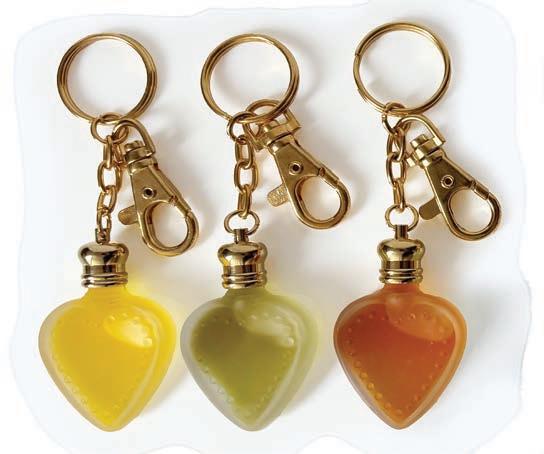
70 Living
Lucky Cloud creates natural fragrances with unique aromatics
By Elisa Gonzales Verdi
82 Out and About Calendar of events
Compiled by Elisa Gonzales Verdi
84 Connections
How Scott Hayward’s vision built a beloved New Hampshire music landmark
By Lynne Snierson
88 Live Free Hangry Birds
By Mike Cote Illustration by Peter Noonan
SPECIAL ADVERTISING SECTION
78 Ask the Experts
ON THE COVER: Photographer Matt Parker was on the golf course to capture rising star Carys Fennessy’s perfect swing, during the LPGA’s FM Global Championship at TPC Boston, Norton, Mass.
Make a life-changing difference for a child.
A child’s road to safety and stability starts with you. Join an info session to learn more.








& DINNER, 7 DAYS A WEEK

Vice President/Publisher Ernesto Burden 603-624-1442 x5117 ernestob@yankeepub.com
Editor Mike Cote 603-624-1442 x5141 mikecote@yankeepub.com
Managing Editor Emily Heidt 603-624-1442 x5115 eheidt@nhmagazine.com
Managing Editor, Sarah Pearson 603-624-1442 x5128
Custom Publications sarahekp@yankeepub.com
Assistant Editor Elisa Gonzales Verdi 603-624-1442 x5010 egonzalesverdi@nhmagazine.com
Assistant Editor Emily Reily 603-624-1442 x5119 emilyr@yankeepub.com
Art Director John R. Goodwin 603-624-1442 x5131 johng@yankeepub.com
Creative Services Director Jodie Hall 603-624-1442 x5122 jodieh@yankeepub.com
Graphic Designer Christian Seyster 603-624-1442 x5116 christians@yankeepub.com
Senior Graphic Nicole Huot 603-624-1442 x5116
Production Artist nicoleh@yankeepub.com
Director of Business Jenna Pelech 603-624-1442 x5154 Development jennap@yankeepub.com
Sales Executives Josh Auger 603-624-1442 x5144 jauger@nhmagazine.com Jessica Schooley 603-624-1442 x5143 jessicas@yankeepub.com
Operations Director Ren Chase 603-624-1442 x5114 renc@yankeepub.com
Sales & Events Coordinator Paul Milone 603-624-1442 x5121 paulm@yankeepub.com
Digital Operations Morgen Connor 603-624-1442 x5149 and Marketing Manager morgenc@yankeepub.com
Information Manager Gail Bleakley 603-563-8111 x113 gailb@yankeepub.com
Assistant Controller Nancy Pfuntner 603-563-8111 x138 nancyp@yankeepub.com
VP/Consumer Marketing Brook Holmberg brookh@yankeepub.com
VP/Retail Sales Sherin Pierce sherinp@yankeepub.com
busIness by getting your message to the right audience at the right time across any or all of these platforms, here in NH or across the country: Radio, Podcasting, OTT TV, Streaming Audio, and all Digital & Social Media. Contact Jay at 603-625-6915 or jaysterin@iheartmedia.com. PANTONE 199C FOR PRINT USE:
Increase your busIness by getting your message to the right audience at the right time across any or all of these platforms, here in NH or across the country: Radio, Podcasting, OTT TV, Streaming Audio, and all Digital & Social Media. Contact Jay at 603-625-6915 or jaysterin@iheartmedia.com. PANTONE 199C FOR PRINT USE:
INCREASE YOUR BUSINESS by getting your message to the right audience at the right time across any or all of these platforms, here in NH or across the country: Radio, Podcasting, OTT TV, Streaming Audio, and all Digital & Social Media. Contact Trudy Sutherland at 603-518-1925 or trudysutherland@iheartmedia.com.
250 Commercial Street, Suite 4014 Manchester, NH 03101
603-624-1442, fax 603-624-1310
E-mail: editor@nhmagazine.com
Advertising: sales@nhmagazine.com
Subscription information:
Subscribe online at: nhmagazine.com or email customerservice@nhmagazine.com
To order by phone call: 877-494-2036
© 2025 Yankee Publishing, Inc.
New Hampshire Magazine® is published by Yankee Publishing, Inc., 250 Commercial Street, Suite 4014, Manchester, NH 03101, 603-624-1442. All rights reserved. Reproduction in whole or in part without the written permission of the publisher is prohibited. The publisher assumes no responsibility for any mistakes in advertisements or editorial. Statements/ opinions expressed herein do not necessarily reflect or represent those of this publication or its officers. While every effort has been made to ensure the accuracy of the information contained in this publication, Yankee Publishing, Inc.: New Hampshire Magazine disclaims all responsibility for omissions and errors. New Hampshire Magazine is published monthly, with the exception of February and April.
USPS permit number 022-604. Periodical postage paid at Manchester 03103-9651. Postmaster send address changes to: New Hampshire Magazine, P.O. Box 37900, Boone, IA 50037-0900

PRINTED IN NEW HAMPSHIRE



SEPTEMBER HAS ARRIVED. BA-DEE-YA!
If you’ve ever wondered what the mystery word from the Earth, Wind & Fire song meant, you’re in great company. Even the song’s lyricist doesn’t know.
Allee Willis thought it was a space-holder written by band leader Maurice White intended to be replaced later (according to Wall Street Journal music scribe Mark Myers).
The newly minted word — call it a variation of “mazel tov!” — made the cut, helping to lift “September” to endless spins on the radio and the playlists of every wedding since 1978.
Now that we’ve planted that earworm in your head, enjoy the deep grooves and positive vibes of our September issue.
We celebrate the meteoric rise of Dover golf phenom Carys Fennessy with our cover story by Eric Schlapak, a freelance writer who teaches at Dover High School. Photographer Matt Parker has chronicled the 18-year-old golf star’s journey at various tournaments along the way. (Page 48).
Imagine “September” played on bagpipes, and you’re ready for the New Hampshire Highland Games, the celebration of Scottish culture that celebrates its 50th anniversary this year at Loon Mountain Resort.
Josh Auger, sales executive for New Hampshire Magazine, is president this year of NHSCOT, the Concord-based nonprofit that organizes the games.
“These games are closing all over the world, and if we can’t get together and support these kinds of initiatives they’re going to go away,” Auger tells writer John Koziol, who covered the games many times over the years as a correspondent for the New Hampshire Union Leader (Page 28).
Julia Ann Weekes, who Union Leader readers know as the newspaper’s long-time arts and entertainment editor, wrote this month’s “Our Town” about Auburn, her hometown for many years before she and her husband moved to Connecticut. Weekes probably has covered the town’s annual toy duck race as many times as Koziol has reported about men in kilts (Page 16).
Frequent contributor Kara McGrath wrote this month’s feature on Port City Air, the aviation company at Portsmouth International Airport, whose 200 employees keep the transportation hub humming (Page 58).
Elisa Gonzales Verdi chose a different mode of transportation for this month’s “In Their Own Words,” taking a bumpy boat ride to interview Capt. Jack Farrell, who travels from the mainland to Star Island two to three times a day, delivering food, supplies and U.S. mail. (Page 34)
The journey to the top of New Hampshire’s highest summit offers more than one way to get there — via the 7.6-mile Mt. Washington Auto Road, the Cog Railway or on foot. Emily Reily talks to weather observers at the Mount Washington Observatory, who work in 12-hour shifts to measure the extreme conditions atop the 6,288-foot mountain, where wind speeds hit 127 mph and temperatures dipped to -110 during a two-day snowstorm in February 2023 (Page 38).
On a warmer note, “Connections” columnist Lynne Snierson spent time with Scott Hayward, owner of Tupelo Music Hall, a Derry music venue that has become a popular hotspot for concertgoers who want to see their favorite acts in an intimate setting. Tupelo has earned a reputation for booking acts that usually play larger halls, such as Peter Frampton, Toto and Chris Isaak (Page 84).
Here’s a booking request for you, Mr. Hayward: Earth, Wind & Fire. Ba-dee-ya!






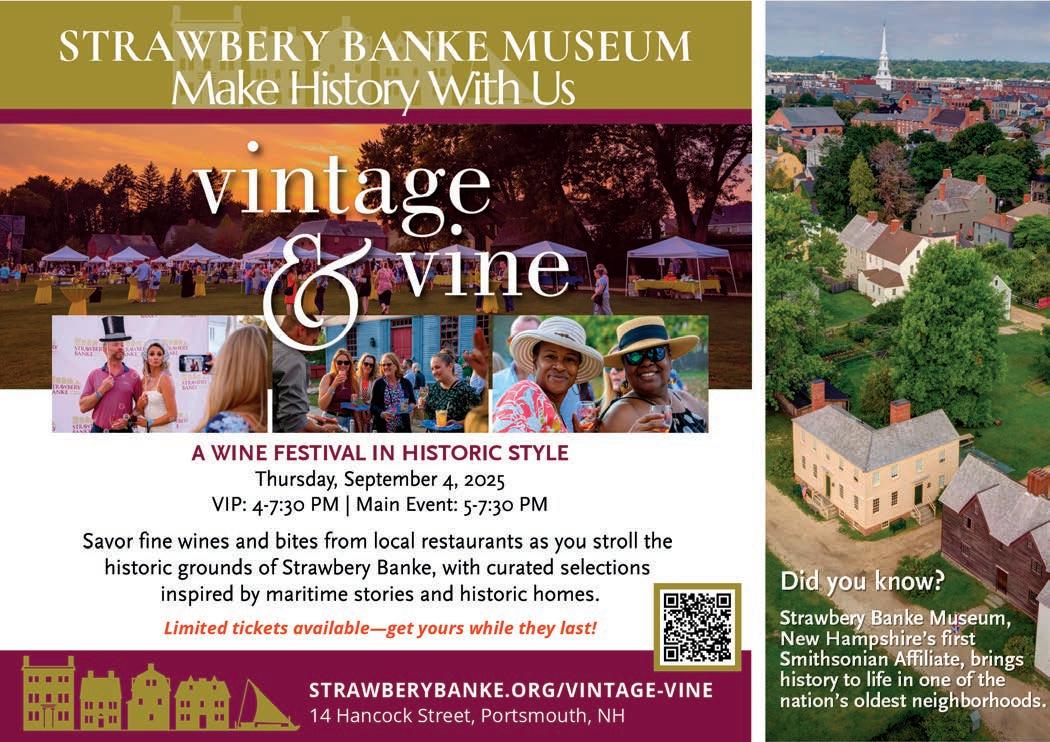
Send letters to Editor Mike Cote, New Hampshire Magazine, 250 Commercial St., Suite 4014, Manchester, NH 03101, or email him at editor@nhmagazine.com.





KEEP AN EYE OUT on our website (and Instagram) for a real-life “Spot the Newt” challenge! This fall, we’ll be creating a scenic road trip that will take you to each covered bridge across the state… with a special newt-tastic twist. All fall long, we’ll help you hunt down corn mazes, find PYO apple orchards, keep track of trick-or-treat times and so much more! This is all happening online, so be sure to check nhmagazine.com and @nhmagazine for the most up-to-date info, and for all of you New Hampshire fall needs!
Spot FOUR newts like the one here, hidden on ads in this issue, tell us where you found them and you might win a gift certificate for $50 to use at The Common Man Restaurants. Each month’s gift card will be different, which adds to the overall Newt fun. Let the hunt begin!
To enter our drawing for Spot the Newt, visit spotthenewt.com and fill out the online form. Or, send answers plus your name, email address and mailing address to:
Spot the Newt c/o New Hampshire Magazine 250 Commercial St., Suite 4014 Manchester, NH 03101
You can also email them to newt@nhmagazine.com.
Last month’s “Spot the Newt” winner is Shirley Willey of Hebron, NH. August issue newts were on pages 17, 19, 99 and 101.









“It was just after sunrise as the last of the morning fog burned off the lake, and I found myself standing on a private beach captivated by a charming little island house that sat proudly in the middle of a quiet cove on Newfound Lake, in Hebron. The old weathered white siding with faded blue trim was the perfect juxtaposition to the just arrived vibrant oranges, yellows and reds of the season. I stood there enjoying the silence of fall on the lake as I looked through the viewfinder of my camera to capture the perfect New Hampshire moment.”

BY JULIA ANN WEEKES / ILLUSTRATION BY PETER NOONAN / PHOTOS BY SUSAN THIBOULT
Every year about this time, a strange migration pattern brings 3,000 ducks to the center of Auburn.
Alex Herlihy, the town historian, who also spent many years as a history teacher before that, knows a thing or two.
Forecasters this year say the birds will arrive Sept. 13, between 10 a.m. and 3 p.m. — just in time for Auburn Day and the 32nd annual Duck Race.
Dan Carpenter, president of the Auburn Historical Association, shares a secret. The ducks, all of them sporting a strange bright yellow hue, already have been captured and put inside the 1855 Hearse House, last used as a horse-drawn hearse in 1914.
The ducks don’t actually fly. Instead, they sort of drift in the water and then careen over the Griffin Mill Waterfall until they reach the finish line. Of course, there are some athletes who veer off-course and get stuck in a bank or the lane lines.
That’s where the duck wrangler steps in. He can’t touch the competitors, so he swirls his arms in the water to create a current and dislodges swimmers. Scores of people from
Auburn and other locales buy tickets and hope their numbered floatie crosses the finish line first, second or third for cash prizes.
It’s the kind of family fun you’ll find only in a small community like Auburn.
Another type of invasion hits town less than a month later. The scarecrow interlopers are a hodgepodge group of strangers, some scary, others wary and many just trying to do their jobs.
Auburn’s Jennie Frulla earned a first-place last year for a well-done kayaker sporting a smile and a broad-brimmed hat while paddling a decked-out canoe across the front lawn. One that still makes people laugh is a mustached police scarecrow in uniform conducting speed checks, holding out a radar to clock passing vehicles.
Auburn is at an intersection, and it’s not because the town doesn’t have a single traffic light. In a social media shout-out asking residents what they loved most about their town, an outpouring followed within minutes — with both delight and dismay.
“The small community where everyone knew everyone else and generations from the same family lived in the community — sadly those days are pretty well gone now,” Roy Thomas said. “It’s lots of things. In the end, the town has more newcomers than not at this point, since it’s now considered a bedroom community to Massachusetts.
The town has become too pricey for locals who grew up there to afford to stay, he says.
“Taxes have risen and have hurt the elderly. It is what it is and isn’t going to change unfortunately,” Thomas said. “Personally, as someone whose family has lived there for four generations, I’m looking at places further north at this point.”
There’s growing concern about changing landscapes, including an influx of people from other states and Gove Group Real Estate’s Cliffs at Evergreen, a multiphase 55-and-older condo complex set to include 79 units near Exit 2. Prices go from the mid-$700,000s to mid-$800,000s. A map
indicated there were 30 units sold and another 21 pending. (Gove Group didn’t answer phones calls and messages about the project.)
In Auburn, some are optimistic about the added tax revenue for the town, but others wonder about the emotional cost of expansion.
A relative newcomer, Kate Tarbox moved here six years ago and says she knew right away she wanted to live here “forever.”
“We love the small-town feel, but not being too far from everything you need. The location is about as perfect as it gets,” she said. “The lake, the trails, the farms and land folks have, and the people – it’s a special place and I truly hope that it stays this way. Less cookie-cutter developments will help preserve the charm (hint hint).”
Native Americans established a fishing settlement they called “Massabesic,” the same name newcomers came to call the lake, which provides water to several communities and gives people a picturesque place to sail, kayak, fish and enjoy recreational trails.
British settlers set foot here in 1720, and there was relative peace until the 1754 French and Indian War. The settlement was obliterated. Chester — also known as Chester Woods, Chester West Parish and Long Meadow, took over the land. It was incorporated as Auburn in 1845.
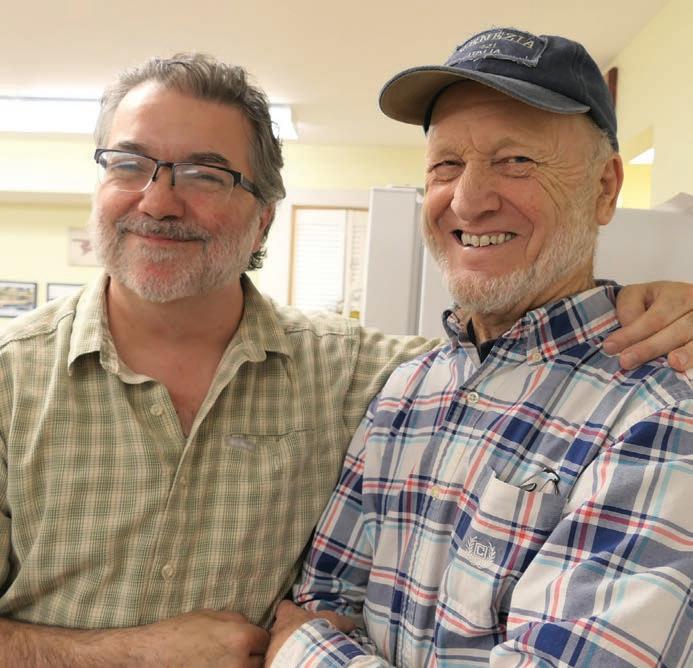
Massabesic was a huge tourist draw in the late 1800s and early 1900s, with the Concord & Portsmouth Railroad — later rebranded as the Portsmouth branch of the Boston & Main Railroad — dropping and picking up passengers from a small depot. Hotels and boat landings dotted the landscape around the lake, but today, most are gone, victims of

fire. Use of the railroad system dwindled in the mid-1900s, and after the last freight trains passed through in the early 1980s, the tracks were ripped out.
As of the 2000 census, 4,682 people lived in Auburn. The latest United States Census estimate for the town is 6,263. Auburn includes 28.7 square miles, made up of 25.2 square miles of land and 3.5 square miles of water.
NH Audubon’s Massabesic Center operates a 49-acre wildlife sanctuary adjacent to land owned by Manchester Water Works that extends north to Battery Point, featuring trails to the lake frequented by hikers and cross-country skiers.
Deb Mancini said she lived in Manchester for 30 years before moving to Auburn.
“I love the wildlife here — from the herons, loons and an occasional eagle on the lake to the woodpeckers and bluebirds in our yard,” Mancini said. “You always have to watch out for turtles crossing the roads to get to the ponds. I enjoy hearing the barred owls and even the coyotes at night.”
Bicentennial Park stretches across a long length of grass that turns into a blanket of yellow, oranges and reds in the fall and benches to take in the water. Monuments

nearby pay tribute to Auburn men who served in the Civil War between 1861 and 1865. Others honor those who served in World War I and II and the Korean and Vietnam wars.
This is the type of community where people don’t walk by with eyes glued to the ground. They line up in the town hallway and catch up with other residents as they wait to pay a tax bill or register a vehicle.
“After my Mom passed, all the neighbors still check on Dad and invite him out for lunch at least once a month,” said Trina McLaughlin-Abbott.
Wooded trails, like the one off Chester Turnpike, and one around Tower Hill Pond, get people on their bikes, into walking shoes and running even faster during black fly season. Stone walls, farm animals, barns, vistas, hikes, history, nature and lake views remain big draws.
Denise Pineault is an avid walker who never misses a chance to make a friend.
“I can’t count how many times I have been walking and everyone I know stops to talk to me, or they’re in their yards and we chat in their driveways,” she said. “They want to see how we’re doing and I want to see how they are doing, and the next thing we know, we have a get-together.
“Now there’s a community center where there are exercise classes. There are more trips planned for seniors. They have more arts and crafts, and I believe it will help with the spirit of the town.”
Greek on the menu
Auburn is home to a handful of eateries, including some local favorites. Both the Auburn Tavern, 346 Hooksett Road, and the Auburn House of Pizza, 15 Chester Road, have added a bit of Greek flair to favorites.
The Tavern’s menu includes souvlaki marinated pork skewers with tzatziki dipping sauce; Shrimp Sagannaki, a Greek appetizer with shrimp sauteed with garlic, tomato and feta cheeses and topped with ouzo liquor; and Avgolemono chicken lemon rice soup.


At the House of Pizza, the menu includes Mykonos pizza with tomato, feta cheese, red onions and black olives; Santorini pizza with spinach and feta; and baklava, a layered pastry dessert made of filo pastry, filled with chopped nuts and sweetened with syrup or honey.
Auburn Pitts Bar and Grill, 167 Rockingham Road, is where you go for tried-and-true American fare: hot dogs, cheeseburgers, wings for dipping, onion rings, grilled cheese, BLTs, fries, chips, nachos, fried mozzarella, chili, subs and wrap, pizza and steak bombs.
In the back there’s a backyard fire pit along with horseshoe and cornhole games and music. It was at the Pitts that a celebration of life for former Auburn Fire Chief Bruce Phillips, an Auburn native who died at 68, took place recently.
For on-the-go places, there’s Dunkin’, and across the street, Myles Travel Plaza, where there is a Burger King and Alltown Fresh fare.
Meanwhile, there’s been talk of a new Pizza Place, Nana’s Kitchen and Pizzeria, going into the industrial plaza on Dartmouth Road, down the street from the Pitts. Renovations continue, so an opening date hasn’t yet been announced.
There are ways to keep the past alive and evolve at the same time — and you don’t need an enormous library to do it, said director Dan Szczesny. The founder of the Griffin Free Public Library, Sebastian Griffin,




























was a pioneer of the Free Library movement in the late 19th century, and he donated his collection and the first library building to Auburn in 1893. Residents and those who work in Auburn get free library cards.
“Our front event room is the original structure,” said Szczesny, a long-time journalist and book author who started working at the library part-time as an assistant in 2014. “The room still has its tin roof. Our circulation room and kids’ room were built and added on in 1895. Pretty much nothing changed after that for 110 years until a new side room, offices and a bathroom expanded our footprint in 2005.”
Despite its small footprint, the library offers an array of services, including links to search its catalog, download and stream items, borrow material from other New Hampshire libraries, and access E-books, audiobooks, movies and magazines.
“We are still, per capita to town size, the smallest library in the state,” Szczesny said. NH









The many-faceted mushroom is a favorite
BY EMILY REILY
At the New Hampshire Mushroom Company in Tamworth, a sign propped up against the storefront window advises people to eat more mushrooms.
Inside the remote growing facility, in a bright, windowless room, owner Eric Milligan is harvesting clusters of matured white oyster mushrooms grown from sterilized wood substrate colonized with mycelium — a vast network of tiny, threadlike material that will “fruit” a mushroom in the right conditions.
Minutes after harvest, Milligan slides the tray of oyster mushrooms into a dark walk-in fridge set to a chilly 34 degrees. This makes them go dormant, preserving them for a few days until they’re picked up by farmers’
markets and wholesale clients around New Hampshire and elsewhere.
Milligan, a farm-tech certified forager with a theater, engineering and construction background, says interest in mushrooms has exploded. As the trend toward healthy living continues, the vitamin-packed mushroom has been taking America by storm.
According to Grand View Research, in 2023, the market for mushrooms in the U.S. was around $2.97 billion. That year, Americans gobbled up 4.9 percent of the global market for edible fungi.
And it’s still growing — the India & U.S.based research firm expects the industry will continue to expand through 2030.
Milligan attributes this rise in popularity to people like him who go “open source” to


share and educate others on growing mushrooms, rather than keep the process under wraps. Milligan helps young farmers cultivate mushrooms, teaches wildlife identification, and holds Saturday night forages at his Tamworth farm for the general public.
“So many people are now into foraging. They’re like, ‘Did I find chanterelles? Did I find oysters?’ ‘Yep, here’s a neat link.’ And I’ll be like, ‘Oh yeah, Chicken of the Woods is

coming up in Massachusetts. Better check my spot next week,’ ” he says.
Depending on availability, customers can buy a variety of cultivated mushrooms here, including chestnut, blue oyster, comb tooth, black pearl oyster, lion’s mane, shiitake and king oyster mushrooms. He also sells a water-soluble mushroom extract powder, mushroom coffee and tea, wellness tinctures, and dried mushrooms.
William Dunkerley, owner of Dunk’s Mushrooms Products and Foraging in Brentwood, delivers mushrooms to about 50 restaurants each week around New Hampshire and New England, including farm-to-table establishments. At his licensed food-processing facility, staff make everything from mushroom jerky using oyster and shiitake mushrooms, to mushroom tea and coffee, mushroom pot pies, lion’s
mane powder, and more.
Known as the “mushroom guy,” Dunkerley grew up “off the grid” in the northern part of the state. His family foraged, preserved and canned the food they found around them.
“I grew up learning how to make cheese and preserve meats and vegetables and dehydrate stuff,” Dunkerley says.
After he was taught about wild mushrooms
Clusters of chestnut mushrooms are seen growing, or “fruiting,” from the base of a sterilized wood substrate that was colonized with mycelium.





By
Beverage Director Zach Stavnezer, at The Foundry, Manchester. Made with Dunk’s Mushrooms

2 ounces mushroominfused rye whiskey
3/4 ounce orgeat
3/4 ounce pineapple juice
1/2 ounce lemon juice
4 dashes angostura bitters
4 dashes black walnut bitters
in his 30s, he, in turn, educated them about wild edibles like nuts, shoots, berries and roots. The more he learned, the more he became hooked on the vast subject of mushrooms.
“I ended up going down the rabbit hole, and it just became the number one interest in my life. Any mushroom I saw, it was my mission to identify it,” Dunkerley says.
About 11 years ago he found an edible mushroom that was rare to New Hampshire — Sparassis spathulata, a white to light brown mushroom that grows at the base of dead or dying trees and stumps. With its loosely gathered rosettes, Sparassis is sometimes known as cauliflower mushroom and is a delicacy.
Milligan bought Dunkerley’s Sparassis,
thus beginning a working relationship between the two suppliers. Dunkerley has grown about 15 to 20 different species, and right now has about seven or eight, including chaga, reishi, two species of blue oyster, chestnut and lion’s mane. He has also collaborated with local businesses, including Loon Chocolate in Manchester, to produce two types of dark chocolate — one with chaga, a medicinal (but not psychedelic) mushroom that’s shown to have health benefits; and another with lion’s mane, which can help cognitive health.
Both mycophiles say mushrooms’ popularity has multiplied recently.
“Right now, mushrooms are having a moment,” Dunkerley says. “The difference from 10 years ago is insane. The general public

knows what lion’s mane is. Two years ago, that was not the case. (People are) finding out that mushrooms are more than just button mushrooms and portobellos.”
The effects of social media and TV advertising are also pushing the possibilities of various edible fungi, but consumers
should always exercise caution. Some, like the destroying angel or death cap mushrooms, are extremely toxic; others are simply harmless. Dunkerley and Milligan have both extensively studied fungi and can accurately identify what’s growing in the wilds of New Hampshire.
Milligan says reishi, “the mushroom of immortality,” helps immune and respiratory systems, while lion’s mane is great for brain health, and turkey tail may help with some kinds of cancer. But neither forager guarantees anything. Dunkerley advises people to always read the label and make sure that the
product containing mushroom states it is “100 percent fruiting body.”
In the world of mushrooms, knowledge is key.
“Most people don’t even really know what a mushroom is. It’s just a reproductive mechanism of something you can’t see, and that’s mycelium. So when you see a mushroom on a tree, there is mycelium that’s already colonizing that tree, decomposing it. The fungal kingdom is actually larger than the plant kingdom. There are more species of mushrooms than there are plants,” Dunkerley says.
“We should have been learning about fungi and how mushrooms interact in our daily lives, when we were learning like, ‘that’s the ground and those are clouds,’ ” Milligan adds.
Amid this mushroom awakening is a chance for people to relearn what they thought they knew about the many-faceted fungus, especially when it comes to cooking with them.
“A lot of people will say, ‘I don’t like mushrooms,’ and the next thing out of their mouth is, ‘it’s a texture thing.’ That’s just because they don’t have mushrooms that are cooked correctly,” Dunkerley says. “I don’t like mushrooms if they’re rubbery or slimy either, and I don’t particularly like button mushrooms and portobellos.”
It’s common to sauté mushrooms or toss some in a salad, but Dunkerley say they’re much more versatile than that. Once the mushroom is mixed with other ingredients, its taste can change dramatically.
“It can create a whole new flavor, like an umami flavor. When you turn a mushroom into powder, it can take on different flavors, and usually not what you expect. It’s usually not, ‘oh, that’s mushroomy.’ It’s more like an umami flavor or a cheesy flavor.”
Dunkerley has even made sweet dishes using mushrooms.
“We do desserts at our dinners all the time with a ton of mushroom powders. We might use four different types of lion’s mane powder in the whipped cream, chestnut powder in the crust,” Dunkerley says.
“Mushrooms are so personal. You can use them in so many different ways, and you can pair them with almost anything.” NH


STORY AND PHOTOS BY JOHN KOZIOL
What began as a family picnic outside the Octagon Lodge has grown into one of the premier celebrations of all things Caledonian anywhere. From Sept. 19 to 21, everyone, no matter their ancestry, is invited to the 50th birthday bash for the New Hampshire Highland Games and Festival at Loon Mountain Resort.
Highlights of the festivities, which for years have cumulatively attracted an average of 35,000 visitors, include an attempt to set a Guinness World Record for the most bagpipers playing the same song and the presentation of a coat of arms from the British
monarchy to NHSCOT, the Concord-based nonprofit that organizes the games and whose mission is to “preserve and promote Scottish culture for future generations.”
Additionally, NHSCOT will announce that it has acquired Camp Spaulding, a former summer camp in Concord, where it will move both its headquarters and programs, although the games will remain at Loon.
NHSCOT President Josh Auger said the games and festival, which started in 1975 at Loon as a Murray-family get-together, are open and welcoming to Scots and non-Scots alike, similar to the thought that on St. Patrick’s Day, everyone is Irish.


“That’s 100 percent correct,” said Auger, who is the advertising sales manager with New Hampshire Magazine. “Everybody is 100 percent Scottish.”
Augur, who grew up in New Hampshire, regularly visited Loon and the Lincoln area with his family growing up and has attended the Highland Games for about 20 years.
“These games are closing all over the world, and if we can’t get together and support these kinds of initiatives, they’re going to go away," Augur said.
The New Hampshire Highland Games has grown and prospered over their halfcentury of existence, and their future is bright, Auger said.
The games have broad support, including from Colin Gray, the head of the Scottish Government USA, who will be in attendance at them.
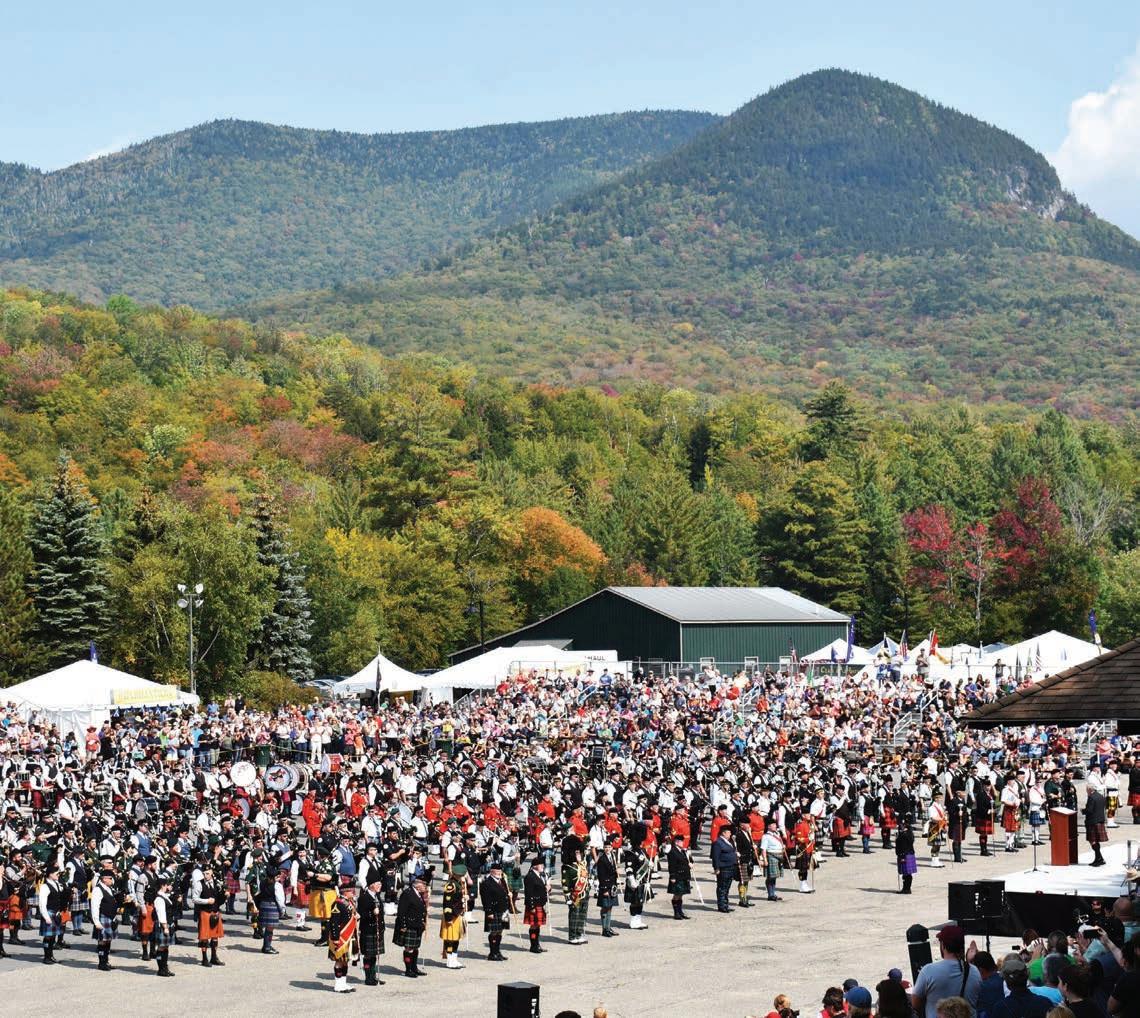
“On behalf of the Scottish Government USA, I would like to offer warm congratulations to the NH Scots on the 50th anniversary of the New Hampshire Highland Games and Festival this year,” Gray wrote in an email.
The games “are an exciting part of the summer for the Scottish diaspora who want to get involved and share their Scottish connections. Our office is delighted to have attended past highland games in New Hampshire and are glad to see the New Hampshire Highland Games and Festival continue to grow every year.”
“We wish everyone competing in the games good luck, and hope all attendees enjoy a weekend of fun, friendship and Scottish hospitality,” Gray said.
It’s a big deal to have Gray present, said Auger, but another big deal is NHSCOT
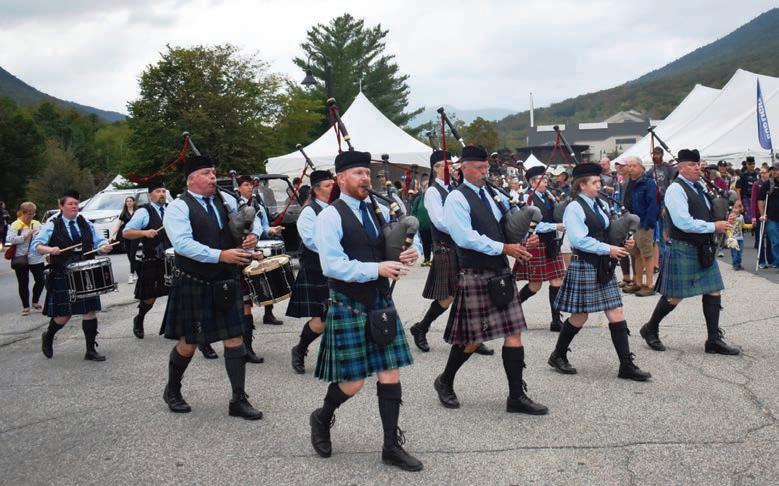

getting its own coat of arms, which is granted by the British monarchy.
“We have never officially had a coat of arm to promote what we do in the States, and we’re proud to know we’re being recognized,” he said.
Other public officials who are expected to attend the Highland games are: Gov. Kelly Ayotte; David Clay, the United Kingdom consul general to New England; and the Honorable Bernadette Jordan, Consul General of Canada in Boston.
Making a return in 2025 after several years of absence is Glaswegian John Carmichael.
A beloved Scottish wit whose accordion-playing skills have taken him round the world and saw him perform numerous times for the late Queen Elizabeth II, Carmichael has served multiple times as emcee of the Highland Games and was one of its honorary chieftains.
“The games are the highlight of my annual calendar. The atmosphere is tremendous,” said Carmichael during a telephone interview
from his home across the pond. “We have highland games in the UK, but they don’t come up (to those at Loon.) “Here (in the UK) it’s more piping and dancing,” he said, whereas the Loon games also feature heavy athletics and a variety of other activities.
“I’m delighted to be coming back to the games” at Loon, Carmichael summed up. “Loon is right up there and (is) as good, if not better, than most.”
For attendees looking to avail themselves of Scottish food and drink at the Highland games, Terri Wiltse, the longtime executive director of NHSCOT, said there will be plenty of both, with Loon serving up the haggis.
According to VisitScotland.com, haggis, Scotland’s national dish, is “a type of savoury pudding that combines meat with oatmeal, onions, salt and spices” and is often served with “bashed neeps” (turnips) and “mashed tatties,” potatoes, and was traditionally cooked in a sheep’s stomach.
Wiltse noted with pride that some residents of Scotland have told her that the Highland Games are “more Scottish than we are,” adding that with almost 40,000 annual visitors, “We’re one of the biggest in the U.S., which does make us one of the biggest in the world.”
The Highland Games has been innovative, she said, in terms of inclusion.
“To my knowledge, we were the first to add disabled veterans” as competitors in the heavy athletics — the Braemar Stone, Open Stone, Heavy Weight for Distance, Light Weight for Distance, Weight Over Bar, Sheaf Toss, and the Caber Toss, Wiltse said.
Tony Felch, whose ancestry is mostly English but who acknowledges that “I do have some Scottish in me,” said he is looking forward to being at the 2025 Highland Games.
A member of the Laconia City Council and of the Laconia Motorcycle Week Association, Felch knows a bit about large events and said the Highland Games, which he has attended more than a dozen times, is well organized, from the shuttle buses that transport vistors to and from Loon to the extensive schedule of activities.
“I go for pretty much everything,” said Felch, although he is particularly partial to the games as a spectacle.
“The games themselves are great, but listening to the bagpipes is magic. The grand entry (of the clans) is just glorious with all the pipers piping at once,” he said.


Lincoln Selectman O.J. Robinson said the Highland Games are an economic boon to his community.
A major year-round tourist destination in itself and a gateway to and from the White Mountains, Robinson said he realized how the Highland Games would change Lincoln in 1977, when his family was operating Parkers Motel, which was booked solid with drum and bagpipe bands.
“One band member told me, ‘This is going to be a big deal,’ and us thinking that would be nice, and obviously he was proven correct,” Robinson said.
He added that the town works closely with NHSCOT and Loon to make sure the event goes off successfully, with Andrew Noyes, former vice president of guest services at Loon and long-time liaison to NH Scot, agreeing that “it’s a coordinated effort” among the parties.
Kevin Bell, Loon’s vice president of marketing, called the Highland Games “a complex and detail-intensive event that requires extensive cooperation” and planning.
“The Games have a major economic impact on the region,” said Bell, “and Loon has been proud to play a role in making this event so successful.”

Ingredients:
1½ parts Hornitos® Plata Tequila
½ part honey syrup
¼ part mezcal
¾ part sweet vermouth
Garnish:
Orange twist
Add all ingredients to a mixing glass. Stir well and strain over fresh ice into a whiskey tumbler (large cubes preferred).
Garnish with an orange twist.


Ingredients:
2 parts Toki® Japanese Whisky 2 parts brewed green tea, cooled Club soda, chilled, to top Optional: Simple syrup, to taste
Garnish:
Mint sprig and lemon peel
Combine Toki® Japanese Whisky and green tea in a tall cocktail glass filled with ice. Stir to chill and combine. Top with chilled club soda. Add simple syrup to taste, if desired. Add more ice if needed. Garnish with a mint sprig and lemon peel.


Ingredients:
2 parts Haku® Japanese Vodka
½ part elderflower liqueur
½ part agave nectar
½ part lime juice
Fresh cilantro and cucumber (for muddling)
Splash of premium soda water
Garnish:
Fresh sprig of cilantro and thin cucumber slice
In a cocktail shaker, muddle 3 thin slices of fresh cucumber and 2 sprigs of cilantro. Add Haku® vodka, elderflower liqueur, agave nectar, and lime juice.
Shake well and strain into an ice-filled glass.
Top with premium soda water and stir gently. Garnish with a sprig of cilantro wrapped with a thin slice of cucumber.



Ingredients:
2 parts Basil Hayden® Kentucky Straight Bourbon Whiskey
¼ part limoncello
½ part fresh lemon juice
1 tablespoon apricot (or peach) jam Garnish:
Fresh sage leaves
Add all ingredients to a cocktail shaker filled with ice. Cover and shake vigorously. Strain into a rocks glass. Garnish with a fresh sage leaf.
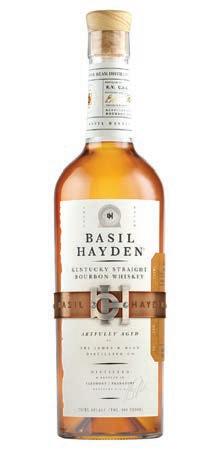
Ingredients:
1½ parts Suntory Roku® Gin
¾ part sweet vermouth
¾ part Campari®
1 tablespoon St. George Spiced Pear Liqueur Garnish:
Orange twist
Add all ingredients to a mixing glass filled with ice. Stir until well chilled. Strain into a rocks glass over a large ice cube. Garnish with an orange twist, if desired.


Ingredients:
1½ parts Jim Beam Black®
3 parts ginger ale
2–3 dashes Angostura® bitters Garnish: Lime wedge
Combine all ingredients in a tall glass filled with ice. Stir gently to combine. Garnish with a lime wedge.


BY ELISA GONZALES VERDI / PHOTOS BY ARTHUR COY
Neither snow nor rain nor wave nor rolling fog will sway Capt. Jack Farrell from completing his rounds to Star Island. He and his ship, a custom-built Mussel Ridge 46, The Shining Star traverses the waters between the Isles of Shoals and Portsmouth two to three times a day, bringing staffers, food, supplies and charters up to the Shoals’ main island.
The Shining Star is lovingly called the Star Island Mailboat, because Farrell delivers the island’s mail to the historic Oceanic Hotel on his morning run. But The Shining Star carries more than packages and letters. She and Farrell have been Star Island’s lifeline for the past 25 years.
New Hampshire Magazine: Tell us about how you got your start on The Shining Star. Jack Farrell: I was always a sailor, and I got
tired of being a contractor. I first went out to Star with my dad in 1959, because it was a good place to go for a short trip and spend a night out there, so I’d known the place for a long time and thought it might be a good place to offer sailboat trips. I had worked on a sailboat that worked out of a hotel in Kennebunkport, and thought ‘Hey, this is great!’. So, I called the (Oceanic) Hotel, and they said ‘Come on out,’ and I did that for a few weeks, and then they said they needed someone to run the supply boat part-time.
NHM: And you’ve been running the supply boat ever since?
JF: I did that for a year or two on the side, and then I became the facilities manager and then the general island manager for about five years. I lived on the island from April to the end of November, and I learned an awful
lot about how the island works and did a lot of good projects out there. While I was there, we installed a solar electric supply system, which at the time was the biggest off-grid solar project in New England, and I think maybe still is. I did a lot of work repairing buildings and catching up on maintenance that had been neglected over the years. It was really fun!
NHM: When did you decide to step back?
JF: I got tired of the pressure of being the manager. It was really hard, because (especially in the summertime) there’s sometimes 500 people there. When you’re the manager, you’re the mayor and the police chief and fire chief and everything. You sleep with the radio by your ear and with your shoes on because you never know what’s going to come up. I did my time doing that, and I really

wanted to keep doing some of the projects out there, and stay involved in the repairs and the improvements.
NHM: What did you do next?
JF: I really liked the running the boat part, so I decided to make a proposal to get my own boat and build a boat that’s perfect for the island. It’s complex, because it needs to carry a combination of people and cargo.
NHM: So, The Shining Star was built specifically for being Star’s freighter?
JF: Yep — we had other boats over the years that had their strong points, so I knew what we really needed. This boat can take 49 passengers, if it has to, and can carry about 12 tons of freight, and a combination. We went
through a process with the Coast Guard to design it, because it’s a passenger and freight boat hybrid. It’s important that we’re able to do both, because when the island needs food or fuel or whatever, we’ve got to go.
NHM: What kind of boat is The Shining Star?
JF: It’s basically a lobster boat; we would call it a Downeast hull. There were probably 40 of these built — most of them are lobster boats, or offshore fishing boats. The Maine lobster boat is a very safe and sturdy boat, because it can go through any kind of weather.
NHM: What was the building process like?
JF: There are builders that just build the hulls, and will have molds made up for a particular hull. You choose which hull you like and

work with that guy, and you buy the hull and then finish it yourself. When you first get it, it’s like a giant empty bathtub, and you get to decide where you want the cabin, the deck, the engine — all that stuff. We did that for about five months in 2022 with a crew from South Berwick, and it was cool because the hull was designed by Albert Hutchinson, who is a guy originally from New Castle. He passed away, but he built a lot of them, and there’s three or four of these boats in the Piscataqua.
NHM: How often are you going up to the island?
JF: Last year, I did almost 300 round trips to the island and 200 other trips.
NHM: Is this an official mail delivery service?
JF: We’re not the U.S. Mail. The island sort of has a secondary mail service with an island postmark on it, but it’s not official. I brought in a bunch of letters yesterday, and they have the Isles of Shoals postmark, which is very fun, and I bring back mail and packages for guests and staff members. I bring and pick up the mail from the main office on the mainland. I call the service the Mailboat, because it’s a service people have in other places, and I thought it would be an interesting option for people to have a boat ride.
NHM: So people can ride the Mailboat?
JF: Yep — you can get on a boat and have a cocktail and get a canned speech and stuff, but here you can meet people that are working on the island and see the inner workings of things. It’s a different way to see the island, and we do all sorts of customized trips for people. Sometimes we have a party, or a history tour, or people want to see seals. We’ll give as much information and narration as they want, but sometimes they just want to turn up the music and dance. You can also book a charter with me for weddings and burials at sea.
NHM: What is your favorite part about making these trips?
JF: Bad weather. I like it when the weather is challenging. Today is foggy and the seas are coming up, which is challenging. Calm, sunny days are nice, but just aren’t as fun. Every day is different, and it keeps me interested. NH
To ride the Star Island Mailboat, or for more information on booking a charter or tour, visit seacoastmaritimecharters.com
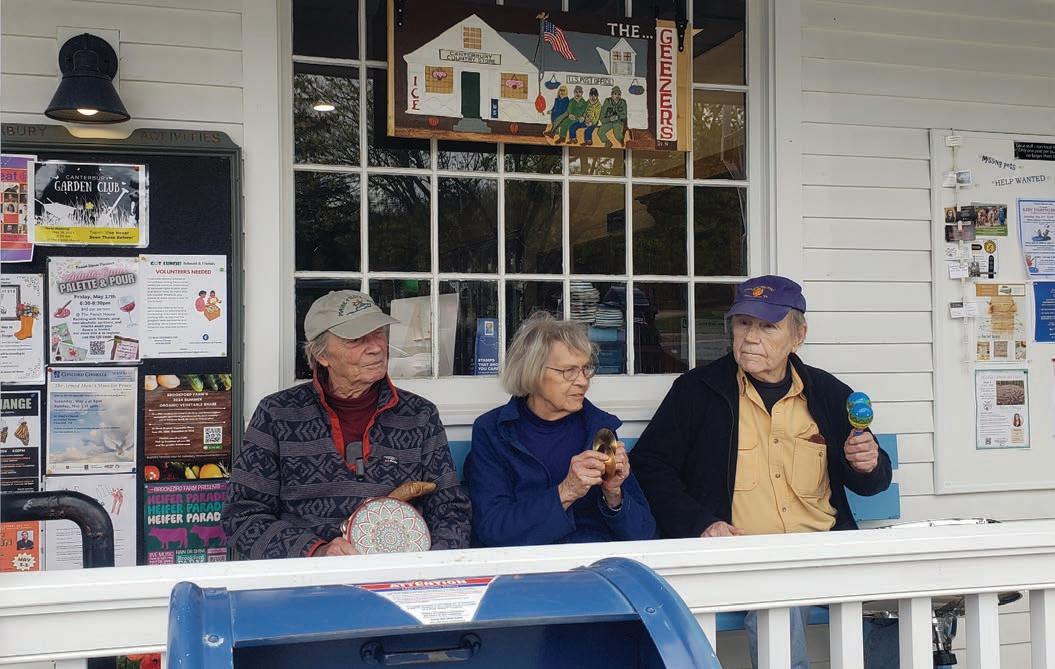
STORY & PHOTOS BY MARSHALL HUDSON
Recently I received a story idea from a regular reader of this column. He suggested I visit the Canterbury Country Store some Saturday morning and witness an unusual ritual by a rare species recently out of hibernation.
The store, on the town common, also houses the local post office and is especially busy on warm Saturday mornings. Locals stop at the combination post office/store to get their mail, coffee, donuts, news and gossip while enroute to the dump with their weekly contribution.
Like any good smalltown store/post office there is a sheltered entrance porch with a wooden bench which invites visitors to, “Set Thee Down.”
With the cold rainy weather behind us and the arrival of sunny days, a band of old geezers have taken up residence on this bench most Saturday mornings. One of the mysteries of nature is that geezers are born old; there is no such thing as a young geezer. Whereas cows congregate in a herd, whales in a pod and birds in a flock, geezers run in a band.
This particular band of geezers is more organized than most and arrived this summer bearing musical noisemakers. Celebrating their arrival, someone hung a sign on the porch to promote their presence before winter drives them back into hibernation. When I cross the porch to enter the store, I’m greeted by the affectionate cackling calls
from the band of geezers. Frank Tupper is playing some kind of wind-powered squeaky keyboard instrument, and he alternates between blowing into the mouthpiece, shaking a pair of maracas, and good-naturedly harassing me.
He inquires if I’m out on parole again. When I ask him what he is doing, he tells me the CIA is looking for him regarding his gun-running days in Cuba, so he is hiding out in plain sight. I ask him about the geezers sign behind his head and feigns innocence. “What sign?”
Dudley Laufman is seated beside him playing a concertina mini accordion. Dudley has the ability to compartmentalize and multitask and is playing a lively jig with his hands while

also challenging me for my opinion in an ongoing debate. He inquires whether dairy cows in a stanchion barn should face in or face out. Facing in provides for easier feeding. Facing out provides for easier milking and cleanup.
I tell him I support facing out because you spend twice as much time at the cow’s tail end than you do at the front. Satisfied, he tells me he is counting black pickup trucks this morning and is up to 37 so far. All of this backand-forth banter he does without missing a musical note.
Stephanie Jackson is seated next to Dudley and sort of playing some cymbals. When I ask her how she came to be a part of this notorious band of geezers, she tells me she was walking her dogs, got tired and sat down to rest for just a minute. Buster and Max are curled up at her feet and greet me, looking for treats.
On the opposite end of the porch is a young lady playing “Marching Through Georgia” on a fiddle. I ask her if she is part of this old geezer band and Frank answers for her. “She is an apprentice old geezer in training. If she keeps up the good work, she might become an old geezer in about 50 years.”
I ask her if she can play, “Garryowen” which was the marching tune for General Custer’s cavalry. She breaks into it effortlessly, and while it sounds good to me, Dudley tells her she didn’t “hang the last note.” She tells him she prefers hanging the next to the last note, and he can play it his way, and she will play it hers. Porch-sitting old geezers are feisty…
The mystery of the “noiseless whiffletree”
The question sent in by a reader was, “Does this make any sense to you?” and involves an old patent for a “noiseless whiffletree.” The reader included the patent details and a promotional flier advertising this new invention. The 1897 patent details are expertly drawn with cross-sections and cutaway views with hidden lines, but no one can figure out what this noiseless whiffletree thing really does.
The promotional flier indicates Mr. J.B. Sargent of West Lebanon is the inventor and sole manufacturer of the gizmo. Sargent advertises to, “Carriage Dealers, Blacksmiths, Liverymen

and Jobbers” that for only 50 cents, they can obtain one of his new noiseless whiffletrees.
A whiffletree is an old farming implement used to connect a horse to a plow, mowing machine or wagon. Historically whiffletrees are made from hardwood and have hooks or eyebolts on each end that link leather straps or chains back to the horse’s collar or harness. The center of the whiffletree typically has an iron ring that connects to the drawbar pin on whatever farm implement is to be pulled by the horse. Whiffletrees provide a pivot point for turning and also distribute the force evenly so that multiple animals pull equally when hitched together.
To figure out what a “noiseless” whiffletree is, you first must distinguish it from a conventional whiffletree. I have a couple hanging on the wall in my barn. When I took one down, it didn’t make any noise. Much like a stick or a rock, a whiffletree does not make any noise unless it strikes something. A closer look at the patent details suggests that what was really invented is a spring-loaded bolt with a locking nut that prevents bolts in the whiffletree from loosening and rattling. The noise of a rattling bolt seems insignificant considering all of the other noises that come with driving a team of horses.
I’m guessing Mr. J.B. Sargent of West Lebanon, NH, likely did not manufacture or sell many noiseless whiffletrees. But I’m glad his invention piqued the interest of a curious reader who sent in the puzzling question and story idea… NH



he summer solstice on June 20 dawned sunny and warm in most of New Hampshire this year. But in Sargent’s Purchase, about 100 miles north of the Seacoast, hurricane-force wind gusts and 30-degree temperatures were forecast to ravage Mount Washington at its peak, 6,288 feet up.
Mike Carmon, summit weather operations manager for the Mount Washington Observatory, says on that day elevated wind speeds from an unseasonably strong system were recorded. When it was over, a maximum wind speed of 124 mph, the fourth highest peak wind gust observers have ever seen in the month of June, was lodged in the books.
“It was a pretty unique event. Normally, our windiest months are in the wintertime,” Carmon says.
Weather observers here, on the tallest peak in the northeastern U.S., are rarely caught off-guard. In fact, they expect hurricane-force wind gusts for about 110 days a year.
Some of the most powerful weather conditions on Earth routinely exist on Mount Washington, and it’s right in our own backyard. No wonder scores of locals, tourists and hikers traverse its trails, attempt to drive the 7.6-mile-long Mt. Washington Auto Road for bumper-sticker bragging rights, or ride the Cog Railway for a pain-free trip to the top.
“We see 300,000 visitors in total each operating season, but it’s really an estimate at best,” says Patrick Hummel, park supervisor for Mount Washington State Park.
About 140,000 people reach the summit on the Cog, about 125,000 people take the Auto Road every season, and an estimated
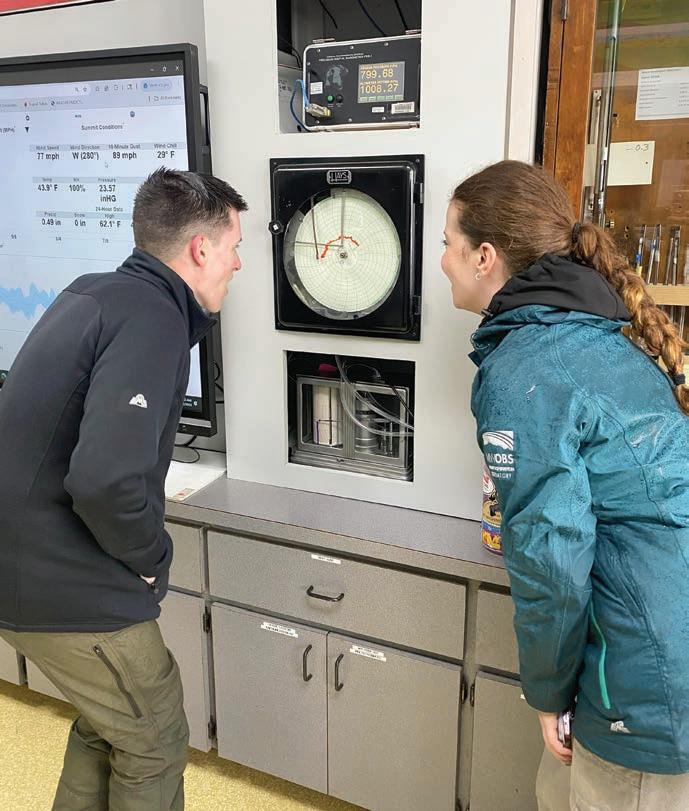

A weather observer collects the precipitation can in winter to measure liquid, solid and mixed precipitation. This process happens every six hours.



75,000 people hike the mountain every year, Hummel says, adding that “tens of millions” have been up and down these trails.
All those footprints could do some sizeable damage to Mount Washington’s delicate ecosystem, but park staff make sure hikers stay on designated paths to preserve the flora and fauna here for future generations.
“It is vital to the future of the summit, especially regarding tourism and development, that the alpine vegetation is protected,” Hummel says.
Safety and education have been the priority for everyone who works there.
For 155 years, hundreds of observers like Carmon have delivered accurate forecasts in challenging, often rapidly changing conditions, all in the name of keeping visitors safe and informed.
Research on the mountain began during the winter of 1870-1871, when observers used the telegraph to deliver forecasts to the region.
The observatory’s first home was a circa-1908 office of the Mount Washington Summit Road Company, where researchers collaborated with the Appalachian Mountain Club to inform hikers. The observatory was founded as a private nonprofit in 1932.
Today, at least three observers alternate 12-hour shifts from 5 a.m. to 5 p.m., (with another on the night shift) 24 hours a day, 365 days a year, to take readings, measure data and update forecasts hourly from the Sherman Adams Summit Building at Mount Washington State Park.
The observatory issues statewide forecasts for New Hampshire and Vermont and publishes the Mount Washington Valley Regional forecast where the team collaborates with local radio groups and each Friday night, conducts Facebook Live forecasts. A higher-summits forecast is released twice a day.
None of the information goes to waste.
“That data will not only go into our over 90-year climate data set, but it will also go into the National Weather Service's data, which helps to inform their forecasting models. The more data we have into those models, the better those models are going to be,” says weather observer and education specialist Amy Cotter of Bartlett adds.
While not every weather report is as
record-breaking as the events of June 20, the observatory’s ongoing research continues to enhance an already rich treasure trove of data, says Cotter.
“We’re going outside collecting weather data, like precipitation, type, sky cover (what types of clouds are observed), temperature and wind speed, and we submit those observations on the hour to the National Weather Service. That's our primary responsibility as weather observers,” Cotter says.
Observers also perform outside maintenance, like scraping rime ice off the weather instruments on the instrument tower, in all situations.
“We do have to go outside every hour, no matter the conditions. The only exception
would be if there is lightning. We are the tallest point within a nearly 800-mile radius, and our weather tower is made out of metal, so it's basically like a big lightning rod,” Cotter says.
Observers record their findings in blog posts, sharing their experiences and infectious excitement about the joys of working here.
During a two-day snowstorm from Feb. 3-4, 2023, a chilly temperature of -47 degrees was recorded around 3 a.m. on Feb. 4, matching the observatory’s 1934 record. Wind chills neared an otherworldly -110 degrees, and a peak wind gust of 127 mph was observed.
Carmon, a meteorologist who’s originally
from New Jersey, says observers like to keep track of the highest wind gusts they personally experience.
“I think anybody who works at the observatory for any length of time has tracked what their highest wind speed is,” says Carmon, who recalls experiencing wind speeds of up to 133 mph when he was performing maintenance on the tower’s anemometers, which measure wind speed.
Carmon also remembers when the remnants of Hurricane Irene passed through in 2011.
“For me, 139 miles per hour is the strongest that I've ever experienced. I was not outside for that,” Carmon says.
But on April 12, 1934, two wind gusts

nearly twice that velocity — 231 mph — roared over the rocks and steadfast vegetation. The highest wind ever recorded by man sent shockwaves through the meteorological world during only the Observatory’s second year. The event, known as the “Big Wind,” as observers call it on the blog, is commemorated by a weathered plaque on the summit. The record stood for more than 60 years.
Besides jaw-dropping wind speeds, monitoring temperature extremes is another cool perk.
“The coldest temperature I experienced up there, I believe it was -41 or -42 degrees,” Carmon says. The estimated wind chill was 100 degrees below zero.
Carmon says if observers are properly


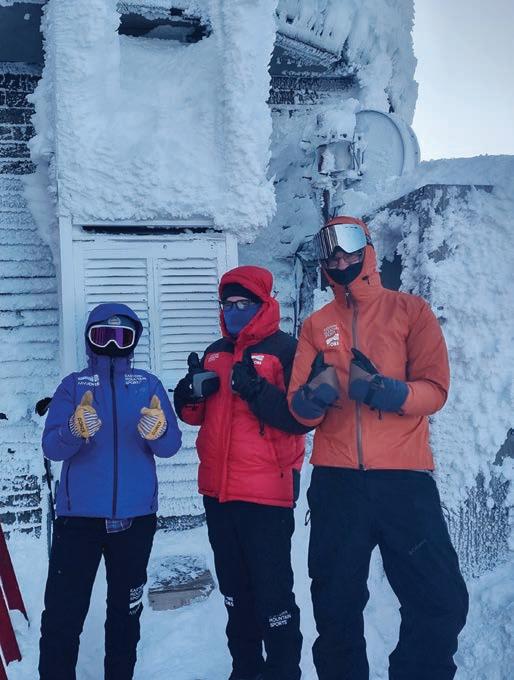


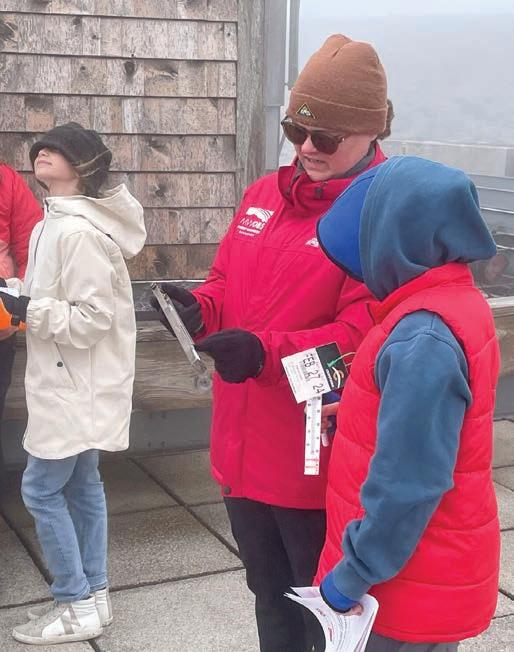

protected, they shouldn’t feel the elements, but severe wind and cold still finds a way.
“When you step outside into extreme cold, it almost feels like you're getting in a bath of cold water. It's just very all-consuming, he says. “Even if you are geared up, you feel it over your body. The wind sort of picks at your gear.”
Thanks to the mountain’s elevation, its position in the Presidential Range, and the jet stream, chaotic weather systems often “culminate” here.
“It's fascinating. Because of where it's situated, and the way the systems track, (it’s the) perfect storm for weather systems,” says Ellen Estabrook, communications manager for Mount Washington Observatory.
Technically, she says, Mount Washington isn’t home to the world’s most extreme weather, but it comes pretty close.
“There's not many places that have a combination of all of those things that we see so frequently for so much of the year,” Estabrook says.
Though not a meteorologist, Estabrook is still surprised by the summit’s unique climate and weather.
“On the mountain, the weather extremes come to you, and you can really just step outside and feel them,” Estabrook says.
She remembers getting “pushed around” by 60 mph winds.
“That was a phenomenon I'd never really experienced before, of just standing outside and getting knocked over by the wind. That was fascinating for me,” she says.
Estabrook works in a satellite office in North Conway, but visits the summit regularly to share information with the media and other groups about ongoing projects and changing weather conditions.
Estabrook says the observatory also offers educational and fun events for kids. For example, this is the second year it has offered a summer camp program called Storm Scouts in August. Kids in Grades 4 through 8 can learn about Mount Washington at the North Conway office, then visit the summit to better understand its weather, history and heritage. Students can chat live online with weather observers during the winter, when the summit is closed to most visitors.
Whether technically open or closed, research takes place here almost nonstop.
Now, with an existing data set that’s more than 90 years old, experts can help determine long-term weather changes. Several high-end research projects are constantly underway.
For example, a snow to-liquid-ratio analysis is measuring how the water content from melted snow changes over time.
“That can tell us a lot about the different types of air masses that may be producing snow on and around Mount Washington,” Carmon says.
Another research project analyzes whether “rain on snow events”— when snow on the ground warms up during a rainstorm and causes flooding — are becoming more frequent.
“We've had a couple of significant flooding events in the past couple years in New
England, particularly ones where there’s snow on the ground, and we get big flooding because of it,” says Carmon says.
UNH’s Space Science Center is even monitoring the strength of cosmic rays that reach the summit from outer space.
Meanwhile, Mount Washington State Park has been tracking the mountain’s rare flora and fauna through a comprehensive study that aims to include every plant in the state park’s almost 60 acres, says Hummel. That staff also collaborates with the White Mountain National Forest and volunteers to remove any invasive plant species.
Keeping the observer’s company is another brave, yet smaller creature: Nimbus the Summit Cat, a grey shorthair tabby who was originally named Greg. Nimbus was discovered in Oklahoma and was adopted after the summit’s previous cat, Marty, died in 2020.
Nimbus joins a long line of cats who have lived on the summit since 1932, when Tikky the cat blazed the trail as a rodent-catcher and companion to the weather observers. Other famous felines have included Inga, Oompha, Blackie, Ammonuisance, Elmer, Manx and George.
As a somewhat elusive mountain “spokescat,” Nimbus can sometimes be found strolling the Sherman Adams State Park Visitor Center or controlling the rodent population.
Besides the many research projects and the constant influx of visitors during the summer, the summit has a gift shop, cafeteria and museum. Weather station tours take place May 24 through mid-October. NH


Dover 18-year-old has become one of the greatest scholastic golfers in NH history
BY ERIC SCHLAPAK | PHOTOGRAPHY BY MATT PARKER
s Carys Fennessy approaches the golf ball to hit her next shot, the club in her hand — let’s call it a saber because of the precise damage it’s about to perform — spins as if it’s nervous. It’s part of her pre-shot routine. Then quick as a finger snap, all becomes calm and her golf swing begins.
A swing that is 10 years in the making. A swing that will carry the 18-year-old from the halls of Dover High School, where she has basically grown up, to the upcoming challenge at College of Charleston. It’s not just the next level of golf she is looking forward to. If you think Carys Fennessy is only about her sport, think again.
It’s a typical September lunch block in the dining area at Dover High School, two weeks into another school year. A few students, freshmen, are standing at a side table waiting for ice cream, which is being sold to raise money. Little do these Dover High newbies
know that their scooper is the one of the best scholastic golfers in New Hampshire history.
Carys hands the customers their treat, wipes her hands on a cloth and begins serving the next in line. She is president of the Athletic Leadership Council (ALC), the group hosting the fundraiser. Carys is a senior and three weeks removed from playing in an LPGA (Ladies Professional Golf Association) tournament, the highest level of women’s golf. A week after dishing out chocolate chip, she would be teeing it up in another important tournament at Pebble Beach Golf Links in California, arguably America’s greatest public golf course. By the time she graduates, she will have qualified for the prestigious U.S. Junior Amateur Tournament, adding to her athletic resume that junior golfers everywhere would envy.
But on this summer day, she’s all about the ice cream and helping ALC reach its financial goal.





“I like having a say in things and have always had leadership roles,” she said. “I feel I can make change and really want to get things done. It’s about doing the job on a daily basis, whether academics, ALC or golf.”
Peter Driscoll has been the Dover High principal for 10 years; before that, he was a social studies teacher at the school, his alma mater. Sports are a passion for Driscoll. He has seen a lot in his tenure as principal, and was also a New Hampshire high school basketball official.
“What you see from Carys is consistent leadership,” Driscoll said. “She’s not a ‘rah-rah’ person. She has been a four-year vice-president of the Class of 2025, and she accomplishes a lot. I think that translates to golf. Because of that, there is no stage too big for her.”
No playbook exists on how to be a successful parent of a young athlete. But in their first attempt, Matt and Candace Fennessy have written a pretty solid draft.
“I have a lot of respect for Matt,” said Kelli Kostick, Carys’ swing coach, based out of Windham. “He’s a teacher and coach. It’s his job to coach, which is different than most parents. He’s an open and honest parent who understands how the golf scene works.”
Matt Fennessy teaches history at Dover High, the school he graduated from. He coaches golf and boys’ varsity basketball, having been involved with both programs since before Carys was born.
“Matt’s done so much,” said his wife,
Candace. “He is always learning something about the process. And if he wasn’t a teacher, there is no way we could do all of the summer tournaments.”
When Carys was young, Matt and Candace did what many parents do: put their children in as many activities as possible. The Carys’ list includes gymnastics, dance, art, soccer and swimming.
“The culture now is, parents get the hairy eyeball if they aren’t putting their kids in so many activities,” Candace said. “It’s kind of nuts out there with the pressure to keep up. People are always asking why we aren’t doing this or that activity.”
One of the important mantras of a young athlete’s development is to quickly determine the delicate balance as to who is “driving the bus.” This is a phrase that both older and younger Fennessys use in describing their journey. When Carys was young, she left her first recital and began assuming control of her bus, saying that she was done with dance.
“You have to let the child be the guide and interpret what they are saying,” Matt said. “It’s not my life or my career. It’s Carys’.”
Carys agrees. “It’s very important to have the player making the decisions, not the parent trying to live through the player. Girls’ golf has a stereotype of crazy dads. And it’s true. I’ve seen a lot of girls who start out liking golf but see their parents living through them.”
Kostick has worked with Carys for 10 years. “It’s never been about Matt’s goals. He’s sensitive to what girls and athletes go
Whether you’re a mini putt-putt champion-turned-first-time golfer, seasoned pro or aspiring Tiger Woods to-be, the New Hampshire Golf Association (NHGA) offers countless tools and resources for golfers of all levels.
Based in Concord, their mission is to “foster an inclusive and inspiring community where everyone — no matter their skill level — can experience the true beauty of the sport.” When it comes to playing for fun, their connections to mixed tournaments, parent/child events, corporate outings or even “Drinks on the Links” are the perfect opportunity to build confidence on the green and make connections that will last long after your last swing of the day.
If you’re interested in being a lifelong learner, take a class to grow in your game, get outfitted in proper gear, or learn your handicap with their app, GHIN. Looking to tee off toward your own Granite State “Masters Green Jacket?” Try your game at one of their flagship events (men, women and juniors included!).
Regardless of what adventure you take, grab your clubs, hit the fairway and let the NHGA take care of the rest. For more information visit nhga.staging2.weduhosting.com
through, but will call her out when it needs to happen. He’s just honest.”
Carys is clear as to who pushes her. “I’m the one wanting to practice,” she said. “Not my parents. I drive myself to the course.”
The Fennessys have always tried to keep things as normal as possible for Carys, especially as she started succeeding. As she inched toward high school, they had to decide about where Carys would spend her high school years.
The weather in New Hampshire obviously doesn’t allow for year-round play, so Carys would routinely take the winter off from golf, and play basketball. Some New England families have taken the drastic step of moving to the South where temperatures rarely drop
below freezing. The goal is to have the young athlete maximize the golf experience, thereby enhancing college and professional opportunities.
“We talked and researched girl golfers who did this,” Matt said. “And there were so many things that they missed from not having a typical high school experience. Worse, some of them ended up getting burned out and dropping the sport. I figured that the worst that can happen is that she goes to a college she wants for school, and tries to walk on to the golf team. If you are good, they will find you.”
Think about that statement. He’s talking about college academics first, golf second, which is where the priority has been since the
“My eyes aren’t set on playing professionally. I can’t get ahead of myself.”
beginning. At College of Charleston, Carys, a regular member of the honor roll, plans to major in political science and eventually be a lawyer.
“I like how systems and organizations like the government run,” she said. “And like I said, I need to be involved. The academics at college are just as important as golf.”
Surprisingly, pro golf isn’t her goal.
“My eyes aren’t set on playing professionally. I can’t get ahead of myself. I am looking forward to establishing a strong academic resume.”
The LPGA Tour is a long and winding trail of 33 events held in 15 U.S. states and 10 countries during a calendar year. Over Labor Day weekend, the traveling show took up

shop at the TPC Boston Course in Norton, Mass., 40 miles southwest of Boston. The FM Global Championship would last four days, with 130 golfers playing on Thursday and Friday. If a golfer didn’t make the top 75, they were cut, not playing over the weekend. Most of the entrants were regulars on this grind. These tournaments aren’t open to any player, only the best of the best. But on the Monday prior to each event, there is a qualifier to add two players.
“I wasn’t thinking of qualifying for the FM,” Carys recalled about the start of that whirlwind week. “I thought a lower score would get in, so I didn’t realize I was in front.”
She easily outdistanced 47 other strong golfers from around the country on that


Monday, and just like that, the teenage high school senior-to-be from New Hampshire, of all places, would tee off in an LPGA tournament three days later, against the best female golfers in the world.
It’s not a Carys Fennessy profile if “the head injury” is missing from the narrative. In June, 2022, she had finished her freshman year and was looking forward to a full slate of summer tournaments that would build her resume for college recruitment. Before that, there would be some enjoyment at the men’s U.S. Open at The Country Club in Brookline, Mass.
During Friday’s round, while in the gallery on the fifth hole of the country’s biggest golf event, an errant shot struck her head, knocking her to the ground. The result was a concussion and some brain bleeding. The summer season was washed away and became secondary to the focus on her health.
“It was a hard summer,” Candace said. “She sometimes slurred her speech and couldn’t talk normally for three weeks. Honestly, we weren’t sure if she’d play golf again.”
Anyone who has had a concussion knows the symptoms Carys faced, and the physical and mental challenges ahead of her.
“There were some bouts of depression,” Carys recalled. “I’d spend the time going online and looking at leaderboards, especially of events I would have played in.”
She doggedly worked with her medical team, and eventually spent hours with
Kostick trying to get her swing back to an elite level.
That August, the New Hampshire Golf Association called and wanted Carys to play in the NH Junior Invitational. The doctor allowed it, but she had to be in a cart instead of walking.
In her first tournament since the injury, she finished sixth, posting two strong rounds of 74 to close out her comeback.
“We are forever grateful to the Wentworth-Douglass team who had the goal to get her back ready for school and golf. It was an emotional moment when she got back playing,” Candace said.
That fall, as a sophomore, Carys won her second individual state championship, an accomplishment made even sweeter, when months prior, there was a chance she wouldn’t golf again, let alone hoist the firstplace plaque.
Because of the injury, she stopped playing basketball, focusing solely on golf. She let her brain heal during the winter and got out on the course that spring, preparing for the critical summer between her sophomore and junior years.
“That summer of 2023 was the revenge tour, making up for lost time,” Matt said with a laugh.
Because of the lack of meaningful tournaments in the previous year, by spring of 2023, Carys had fallen out of any sort of rankings, as if she didn’t exist. That didn’t last long.


She played in big event after big event, showing the golfing world what they had missed the previous summer. Included in this was a victory in the NH Women’s Amateur, a tournament usually won by someone older than 16. Carys won the three-day event by a staggering 15 shots.
That fall, she won her third state title, and made the decision to attend College of Charleston, a South Carolina school that is strong in both academics and women’s golf. This was not a decision made lightly. During the recruiting, Carys was in contact with Lauren Thibodeau from Hampstead, a 2018 Pinkerton Academy grad. Thibodeau was the first New Hampshire golfer to win four state golf championships. She played golf at University of Louisville and is now working for Team Mizuno in Atlanta.
“The main things that I shared with her was my college golf experience and offering to help if she had any questions about the process. I was glad that I had a few people to lean on for advice when I was at that age. I knew that this was a way to help the next generation of New Hampshire golfers. I am very glad for my relationship with Carys and to see the strong young woman she has become.”
Carys made New Hampshire proud with some great golf on Thursday and Friday at the FM, but she was cut after Friday’s second round. She gathered herself over the long weekend, and on Tuesday, she was back at school and the Dover High golf team, a group of mostly boys, including her brother, Des.
Many schools don’t have a girl on the team, never mind having a girl at its top player. But at Dover, it’s become the norm for the last four years.
“It was definitely a little weird,” she said about returning to scholastic golf after playing in a pro event. “I got a lot of questions from other high school players and coaches. Even random people in the clubhouses.”
As she has accomplished so much, Carys is no longer the youngster looking up to others. Ready or not, in Shakespearean verbiage, greatness has been thrust upon her. At the FM tournament, a young girl from Rochester drove specifically to see Carys play.
“She asked me to sign some things for her and told me she was my biggest fan. That was neat,” Carys said.
Addy Churchill is a sophomore at Dover High, and the only other girl on the golf team. Her older sister Leyden is one of Carys’ best friends.
“I’ve known Carys for eight years,” Addy said. “She is so humble and never talks about her golf accomplishments. I probably wouldn’t be playing golf if it wasn’t for Carys. She’s been my biggest role model. With the two of us being the only girls, she’s taught me how to stick up for myself, not only on the team but in general.”
Carys will keep pushing forward, both in golf and in the classroom, and possibly the courtroom.
“You know, I golf for myself, and sometimes don’t realize my impact. Others have called me a celebrity, which I’m not.”
She’s just Carys, being Carys. NH
Ready to trade your usual fairway for something new? Here are a few local courses that are worth the swing and bring the fun, the challenge and maybe even a birdie or two.
Maplewood Golf Club, Bethlehem / maplewoodgolfresort.com
Wentworth by the Sea, Rye / wentworthbytheseacc.com
Wentworth Golf Club, Jackson Village / wentworthgolf.com
Windham Country Club, Windham / windhamcc.com
The Shattuck Golf Club, Jaffrey / shattuckgolf.com
The Oaks , Somersworth / candiaoaks.com
Birch Hill Country Club, Moultonborough / birchhillcc.com
Pembroke Pines Country Club, Pembroke / pembrokepinescc.com
Owl’s Nest Vineyard Country Club, Ashland / owlsnestvineyardcourse.com
Canterbury Woods Country Club, Canterbury / canterburywoodscc.com
Hoodkroft Country Club, Derry / hoodkroftcc.com
Hidden Creek Country Club, Litchfield / hiddencreeknh.com
Carter Country Club, Lebanon / cartercc.com
Angus Lea Golf Course, Hillsboro / anguslea.com

From military cargo planes to lobster runs, Port City Air keeps the Seacoast buzzing with small-town warmth and big-league logistics

BY KARA M c GRATH AND ELIZABETH SANDS
t's 5 a.m. when the sun rises over Rye Beach and edges up an airstrip more than 11,000 feet long at Portsmouth International Airport at Pease. First up at the front desk for Port City Air’s Bridget DuBois and Kaitlin Scott is a radio call to get 20,000 gallons of jet fuel for a U.S. Air Force KC-46, a massive refueler preparing for its morning mission.
Chelsea Smith, a 21-year-old member of the line crew, pumps the order from a 10,000-gallon fuel truck. Kristin O’Keefe, from the airport’s Great Circle Catering company, makes breakfast sandwiches for pilots and crew. Just after sunrise, Sean O’Connor, a nearby resident, maneuvers his 1968 Cessna 177 out of his hangar for an early outing down the coast.
Another day unfolds at Port City Air, a family-owned business near the runway between offramps Papa and Quebec that has welcomed visitors to New Hampshire for more than 30 years.
“People think we’re an airport, but we’re actually an FBO, a fixed base operator,” says Jamie McCarthy, director of operations.
The “fixed base” is a concept from before World War I, in the days of crop dusters, barnstormers and flying circuses. After the war, fixed-base operators like Port City became the all-purpose shop for a growing aviation industry. Today, the company is a full-service stopover offering fueling, customs, catering, maintenance, de-icing, hangar rental and overnight parking.
“We literally started with a mechanic and a plane,” McCarthy says. “It was started by Bob Jesurum, and later, his brother Dick came aboard. They called the company Port City Aircraft Repair, and it was just a small onestop place for airplane repairs.”
Jesurum is still part of the family business, which has grown into a staff of more than 200 who serve single-engine pilots, domestic and international charters, commercial airliners Allegiant and Breeze Airways and military flights from around the globe.





Whether a pilot arrives in an electric helicopter or a flying Beluga whale (an Airbus Super Transporter), Port City’s coordinated teams — customer service, line crew, charter operations, catering and military support — engage in a daily whirlwind of activities involving the thrilling and downright unexpected. Lobster delivery? Check. Free pizza for all military flights, U.S. and international? Check. Dog sitting? In special cases.
“We take care of everyone like they’re family,” says Stephanie Pratt, Port City’s director of sales and marketing. “It doesn’t matter if you fly a Cessna two-seater or a giant cargo plane.”
The 12-year veteran at Port City has grown into her executive role, handling everything from fueling, locating lost luggage, and de-icing planes big enough to carry helicopters and mini vans. Her enthusiasm for the work has not faded.
“Because we’re on the coast, we’re a great jumping off spot for going overseas,” Pratt says.
Most people think of Boston when they’re in New England, but at Pease, there’s a small-town feel with big-time expertise that’s a unique gateway for travelers. That list includes political candidates, government officials, sports stars and global phenoms.
“We have on-site customs, which is a bigtime saver for incoming international flights,” Pratt says. “Privacy and confidentiality are key, but we give the same professional care to everyone who lands on our ramp.”
The sheer volume of flights and the nature of travelers’ needs requires the staff to be nimble, ready to change gears at a moment’s notice. “Sometimes we don’t know when aircraft are coming in,” Pratt says. “We get a call from a pilot asking to divert because of bad weather or an emergency and we adjust.”




In summer, when air travel peaks, that can mean five cargo planes outbound to Poland, six charter flights carrying CEOs or officials from Washington, D.C., families jetting to Nova Scotia to escape the heat, or a LifeFlight helicopter transporting patients from Dartmouth Hitchcock Medical Center.
In emergencies, it’s all-hands-on-deck. Port City is open 24/7 with all units on call, whether arranging Customs or providing lightning-fast fuel turnarounds. And most of the work is done on radios using aviation callouts: ALPHA. BRAVO. CHARLIE.
As a private company, Port City isn’t open to the public to watch plane landings and its rapid-fire response teams. But stand in the airport viewing lot off Grafton Road and you’ll marvel at the kinds of planes that land daily on the Seacoast.
“We serve members of the military worldwide, whether from the United States, the Royal Air Force, Italy, Sweden, Spain, or Hungary,” says Jamie McCarthy. With its long runway, Pease can handle the truly mammoth. That includes the biggest plane in the world, a Ukranian-based Antonov cargo plane that on its approach looks like a jumbo manatee inching its way down from the clouds.
“It puts me in awe every time I see it,” says Michael Khan, charter operations manager. “It amazes me that a plane that big is able to take off and land.”
Long runways and de-icing capability aren’t the top reasons military crews choose Pease and Port City. “When a crew books a flight through Pease for a quick fuel or tech stop, or if they’re staying here for a week on missions, they know they’re in good hands. We take care of logistics,” McCarthy says.
They get down-home New Hampshire hospitality, a cozy hotel room and quaint towns in which to relax. The Port City welcome includes a free locally-sourced pizza and signature gifts: baseball caps with embroidered plane insignias, pins, bottle openers, pen knives and stuffed toy lobsters for kids. It’s a warmth that goes both ways. The Port City lobby walls are covered with framed displays of military shoulder patches, hallmarks from each unit given by crew when they have received the great care.
Home-cooked food is a cornerstone of the Port City experience. The company has expanded to include Great Circle Catering,
“It puts me in awe every time I see it. It amazes me that a plane that big is able to take off and land.”
—MICHAEL KHAN
an on-site facility. It’s key to the Port City “family” vision, and like most things at the company, it’s not a job for the weary.
“In a recent 72-hour period, Great Circle cranked out over 7,000 meals, and our staff served them on five international cargo flights,” says McCarthy. Upon request, staff also will pick up and pack live lobsters to go.
Port City operates 24/7, rain or shine, and shuts down for snow only until the airport authority clears the runways. “We’ve honestly only closed one time since I’ve been here,” Pratt says.
Challenges become lessons learned. When a giant C-5 cargo plane broke down on the runway, it was impossible to move the plane to the ramp because they didn’t have a towbar for that unforeseen mishap. “We now have a towbar for every kind of plane that lands here,” Pratt says.
Weather and darkness make for daunting tasks like de-icing, where the line operator sits in a glass box dangling over the
passenger-filled plane and sprays liquid on every part of the body and wings. And after long flights over the Atlantic, pilots rely on the charter team to guide them to a parking spot, a somewhat unnerving procedure called a “follow-me.”
According to Kahn, charter staff wait in a van at the edge of the ramp and inch forward, guiding a large-body plane, always careful to keep the right distance from the airplane’s nose so the pilot can see where to go. Think turtle leading dinosaur.
“After a long flight and when it’s dark, the follow-me is one less task. It helps the pilot and the tower see where a plane is parked,” Kahn says. With so many huge planes parked in a finite space, the charter staff is thinking about wingspan and gives each giant enough room with only a sneeze to spare.
“My first ‘follow-me’ was the Antonov,” Kahn says. “It was crazy. You’re driving and you can only see the wheels because the





plane is so far up, and you have to keep the right distance, so they can see you. It’s exhilarating.”
Last July, Port City welcomed F-18 fighter jets and C-130 cargo planes for Atlantic Alliance 2025, a 10-day annual military training exercise. This year, the training included 200 U.S. Marines, forces from the United Kingdom and the Netherlands in practice land, air and sea missions to protect the Eastern Seaboard.
“Every employee gave their all working 12-hour shifts, sometimes on a 100-degree ramp. It required a lot of teamwork and morale was high,” Pratt says. “We had foosball, cornhole and Connect Four in one of the hangars. The leadership was from Massachusetts and happy to be back in New England. They put on a lobster

bake for everyone after the last mission.”
For McCarthy, such widespread operations are never routine but come as no surprise. He rolls his eyes when he recounts the tale of a multinational war game in 2024 that required Port City Air to assist with moving members of the Italian Air Force to Alaska, a feat McCarthy describes as a “major undertaking.”
The Italians arrived in waves with six Eurofighters, six F-35 fighter jets, three refueling tankers and two C-130 cargo support aircraft.
“We all kind of looked at each other like, ‘That’s 17 airplanes. What are we going to do with 17 airplanes?’” McCarthy recalls. “In 40 minutes, we put all those aircraft on the ground, had everybody unloaded and all ready to go to their hotels.” NH

The rumblings of your car on I-95 or the windows of your near-Portsmouth house take on a special type of meaningful joy when the Blue Angels come to town. After being away for nearly a decade, the U.S. Navy jet team is making its return for Thunder Over New Hampshire happening at Pease Air National Guard Base Sept. 6 and 7. Other performers for this popular air show include UH-60 Blackhawks, U.S. Para-Commandos, U.S. Air Force F-35 Lightning II teams and more. General admission for the show is free — it’s the perfect weekend packed with heart-pounding fun and activities for the whole family. For more information, visit thunderovernewhampshire.com.


BY ELISA GONZALES VERDI / PHOTOS COURTESY LUCKY CLOUD
Every scent tells a story. Perfumes can whisk you away to far-off lands, or envelop you in deep nostalgia. They remind us of people we’ve loved, and introduce the world to the person we want to be before stepping into a room.
Danielle Bryant, the owner and founder of the Seacoast-based perfume company, Lucky Cloud, is an aromatic artist, creating delicate mixes of scents to craft natural perfumes that everyone, including people like herself, can enjoy.
“It started because I am so sensitive to perfume,” Bryant said. “I’m that person who has allergies and reacts to everything.”
Bryant had spent years searching tirelessly
for a perfume that she wasn’t allergic to, with no luck. Eventually, she took matters into her own hands and decided that if she couldn’t find a perfume that she wasn’t allergic to on the shelf, she would create one.
“I got a couple of oils and made a really rudimentary thing that I liked for a bit, and that’s where it started,” Bryant said.
Bryant quickly fell in love with the process of creating fragrances, and wanted to dive deeper into perfumery. As she started making more “proper” perfumes with complex formulas, Bryant began making the types of perfumes that she had been dreaming of, but was never able to find. She also saw that there was an untapped market for a perfume

“What is interesting about perfumery is that usually you add notes that really don’t seem like they belong.”
company that was synthetic-free and totally transparent with their ingredients. Bryant debuted Lucky Cloud in the fall of 2024, with a line of six perfumes. In her vision, this first line of perfumes would become her core line — something that she would always offer no matter what.
“I wanted to really focus on rare and unusual botanicals,” said Bryant about the development of her core line. “(I wanted to use) aromatics that you’re not just going to find in other perfumes you’re going to encounter in your day-to-day or at Sephora.”
It all started with “Lotus Eater,” the first
perfume that Bryant made for the line.
“Pink lotus was the first aromatic that I worked with,” Bryant said. “I love the smell. I can’t get enough of it.”
Each perfume was created around a scent that Bryant became entranced by.
“For ‘Lotus Eater,’ it was the pink lotus — I was like, ‘I need to make a perfume. This smell is… so beautiful.’ Same with ‘Tea Ceremony’ — when I smelled this green tea extract, I was blown away. The same goes for ‘Moon Palace,’ (for) which I use osmanthus (which is a really beautiful little flower). That’s where each one of them started. I found my center of the perfume, and that’s where I built it.”
After finding the perfume’s center, Bryant will build out the scent with what she finds most magnetizing. She plays with different oils and modifiers that can be imperceptible when the wearer smells it, but makes a huge impact in the overall profile of the fragrance.
“What is interesting about perfumery is that usually you add notes that really don’t
seem like they belong,” Bryant said. “For some of my perfumes, (I use) rose, and you won’t smell rose, but you’ll smell the effect of the rose and how the rose is impacting the other notes. That’s where the real fun of perfumery is — using these elements that are completely changing the perfume, but aren’t perceived outright.”
Bryant proudly manufactures all of her perfumes by hand at her Hampton-based studio. Lucky Cloud is a one-woman operation and Bryant does everything, from making stock, to filling bottles, to labeling and boxing each perfume and shipping each order, to branding, running socials and website design.
“As an indie perfumer, I make my own formula, source my own oils, and make my own stock, on top of bottling, labeling, branding and sales,” said Bryant. “It’s much more labor-intensive, but it’s also so rewarding to make perfume that really is unique and to offer something to customers that they aren’t going to find elsewhere.”
Even though she is allergic to perfume,

Bryant formulates, crafts, packages and ships all of her perfumes from her Seacoast studio.

Bryant says that she doesn’t have any of her usual allergy issues while crafting or wearing her fragrances, because hers are all-natural; she doesn’t use synthetics.
“Wearing a perfume that’s totally natural is different, because it wears differently and lasts a different amount of time,” Bryant said. Bryant explained that synthetic molecules are simple, and because there’s only one molecule, it has a more linear life. That’s why you can smell synthetic-based perfumes for a full day or a week. Natural oils are different.
“With natural oils, you have dozens or more molecules in a single oil, like rosemary or whatever,” Bryant said. “It’s kind of like a symphony. It has a whole life cycle where it’s evolving and transforming and decomposing. So, instead of your perfume lasting a day or two weeks or filling the entire room, it’s going to wear closer to your skin and be a closer experience.”
Natural perfumes also feature different aromatics that are truer to life.
“(These are scents) you’ll find out in the wild,” Bryant said. “You can go outside and smell them. I don’t have any shade for synthetic perfume or mixed media perfume.



By nature, natural perfumes will fade faster; however, Bryant says that the longevity of the scent lies in the placement. Here are her tips for getting the longest wear out of your perfume.
“My favorite place is to apply is the wrists. I think most people go for the wrists, pulse points and the front of the neck. The back of the neck is an underrated spot. It gives you this enveloping feeling, which I really appreciate. It also reduces nose blindness to your perfume.
If you’re somebody who feels like you stop smelling your perfume after like 20 or 30 minutes, sometimes, not always, it’s because you smell too much of it at once. It’s all in front of you — in front of your nose and under your nose. If you put it on the back of you, you can get a feel for your perfume for longer.”
I think all perfumers are very talented, and I admire everybody who’s working in this medium, but (working with naturals) is a whole different world to work with.”
Bryant also ensures that each of her perfumes features a transparent ingredient list, and are made with aromatics that are ethically sourced. While she can’t share her sourcing exactly (that’s a trade secret), Bryant ensures that her boxes for sourcing and sustainability are checked.
“I make sure that people are paid fairly and that nature and earth are treated fairly,” Bryant said. “There are a lot of ways to take too much, so really, sustainability and ethics are guiding my choices for sourcing.”
In the year since she first opened Lucky Cloud, Bryant has seen her business boom. Perfumery has become her full-time job, and she makes 1,200g of stock per variation (compared to the 5g she made when she first
started). Her perfumes can be found at 3S Artspace and janegee in Portsmouth, and are available on her website. There, she sells her discovery boxes, full-sized bottles and her perfume charms.
“It took a few years of building my skills, solidifying my vision, stashing my cash, but here we are. I’m proud of how far things have come, and I’m very excited for where things are going,” said Bryant.
“I have a lot coming up,” Bryant added. “It’s been a really great year. The line has been so well received, and I am continuously adapting and growing the brand. I have some more of my perfume charms coming out soon, and I have more fragrances in the works.” NH
For more information about Lucky Cloud, visit luckycloudinyoursky.com or visit them on instagram @luckycloudinyoursky











You have spent most of your adult life creating wealth and assets for you and your family. If you are like most people, you probably believe that your final wishes will be carried out without much difficulty. Those who fail to manage their estates and create rock solid wills are leaving themselves wide

open to a plethora of troubles that will make it very difficult for your loved ones and others to receive what you intended. We reached out to two of New Hampshire’s most prestigious law firms to learn more about wills and estate planning and why they are critical to protecting your assets.




QW ho makes my decisions if I become incapacitated?
ASuppose you become incapacitated without a plan in place. In that case, the law provides roadmaps for others to make medical and legal/financial decisions for you. A doctor can appoint a surrogate to make medical decisions on your behalf for up to 180 days. After 180 days, the authority terminates, and if you remain incapacitated, someone must petition the court for Guardianship of the Person to make your medical decisions. For legal and financial decisions, someone would petition the court for Guardianship of the Estate, as there is no option for a surrogate to make these types of decisions.
Executing an Advance Directive, which names the agent you want to make your medical decisions, and gives guidance on life-sustaining measures, and a Durable Power of Attorney, which allows you to grant an agent the authority to manage your finances or make legal decisions, provides your future self the assurances that if something unexpected happens to you, the right people can make the best decisions for your care.
QWhat’s the difference between a will and a trust – do I need both?
ABoth a will and a trust can direct where and how your assets pass to your intended beneficiaries upon your death. However, one of the key differences between the two is that a will does not take effect until you pass away, whereas a trust becomes effective immediately upon signing and funding it. A trust allows for the management

of your assets by the trustee during your life, incapacity, and following your death. Assets that are held by the trust, or that name the trust as the direct beneficiary, are not included in your probate estate and are therefore not subject to the court probate procedures.
Even if you have a trust, you should always also have a will. In the case of estate planning that incorporates a revocable trust, it is common practice to execute a “pourover” will that directs that any assets held in your individual name upon your passing, be transferred to your trust for final distribution. This ensures that any assets that unexpectedly end up in your probate estate are still distributed according to your stated wishes.
Trust planning varies in complexity, and we encourage you to build a strong relationship with your estate planning attorney so they can provide the most well-informed advice on how to effectuate your goals.
— Amanda K. Steenhuis, Esq. Shaheen & Gordon, P.A., Nashua
Jocelyn P. Frawley, Esq. Shaheen & Gordon, P.A., Manchester

QHow can I avoid probate?
AProbate administration is generally required for estates in New Hampshire. However ,there are planning techniques that, if done correctly, can be implemented to avoid probate. Many people understand the importance of having a will to designate an executor and beneficiaries, but they often do not realize that a will alone is insufficient to avoid probate.
The best way to avoid probate is by having a properly funded revocable trust. The trust allows you, as the grantor, to appoint yourself as trustee, retain control over your assets and to modify the terms at any time during your life. Assets that should be held in your trust include real estate, bank and brokerage accounts, and motor vehicles. Once your trust has been drafted and executed, it is imperative that you transfer ownership of your assets to yourself as trustee of the trust. Failure to ensure that your trust is properly funded renders the trust useless as a tool to avoid probate. In addition to creating a trust to hold your assets, there
QWhat tools are available for families with special needs children?
AIt is of critical importance that families with special needs children lay a strong foundation to ensure that the child will be well-cared for into the future. The needs of special needs children are best served when families take a proactive approach. Some tools to consider (not all may be applicable):
First, help the child apply for public benefits. Certain public benefits programs require a finding of disability and that the applicant be impoverished. The proper positioning of any assets personally owned by the child will provide for a smoother application process.
Second, establish a special needs trust for the sole benefit of the child. Special needs trusts are “discretionary trusts” which allow the trustee to decide about investments and distributions, allow “use” assets (such as real estate and automobiles), have a spendthrift clause to protect the trust from claims, and state that the trustee may not duplicate public
are other methods that can be used to avoid probate. Owning property with other individuals as joint tenants with the right of survivorship, allows the property to pass automatically to the survivors upon your death without the requirement of probate. Generally, this type of ownership is appropriate for couples, whether married or not, who purchase property together. If, however, you do not wish the survivor to inherit your share of the real estate, then it is important to discuss this with your attorney so proper estate planning techniques can be employed to meet your goals.
In the case of bank accounts, it is possible to have a “payableon-death” (POD) designation that allows you to maintain control of the money in the account and at your death, the funds can be paid directly to the beneficiary, without probate court approval. Lastly, some other types of accounts allow you to designate a beneficiary. For example, it is common to designate a beneficiary on brokerage accounts by completing a transfer-on-death form. No probate proceedings are required, and the funds can be transferred directly to the beneficiaries.
Probate is easily avoidable, however, it requires the attention of a skilled estate planning attorney to guide you through the various categories of assets and the method that best serves your needs.
— Laura M. Dudziak, Associate Attorney Estate Planning, Probate and Family Law, Upton & Hatfield
benefits. If properly administered, the assets owned by a special needs trust will not be counted for public benefits purposes.
Third, establish an ABLE account. Subject to certain limitations, an ABLE account provides an opportunity for individuals with disabilities to have savings accounts that will support their education, health and other disability related needs with no impact to public benefits.
Fourth, pursue guardianship if the child is unable to make medical or financial decisions, or if he/she is able to make those decisions, then he/she should create powers of attorney and an authorization to share protected health information. Families may also want to consider supported decision making, which allows an adult child to choose someone to help them with medical and financial matters without needing the full capacity needed for power of attorney documents.
Since every planning situation is unique, families should consult with a qualified disability law/special needs trust attorney.
— Theofilos Vougias, Esq. and Sarah S Ambrogi, Esq., Devine Millimet


AUGUST 28 - SEPTEMBER 1
Hopkinton State
New Hampshire has no shortage of storied fairs, and kicking off the season of fall agricultural fun is the 110-year-old Hopkinton State Fair. From demolition derbies and educational exhibits to livestock shows and decadent fried dough, this Labor Day weekend tradition is fun for the whole family. This year, the world-famous Frisbee dogs, the Disc-Connected K9s, will perform all three days of the fair! Prices vary.
Thursday 5 to 10 p.m., Friday, Saturday and Sunday 8 a.m. to 11 p.m., and Monday 8 a.m. to 5 p.m. Hopkinton Fair Grounds, 392 Kearsarge Ave., Contoocook. hsfair.org.
SEPTEMBER 1

Get your groove on with Mica’s Groove Train at Jimmy’s Jazz and Blues Club! On Sept. 1, this award-winning band of ridiculously talented musicians will take the stage for a night of funky rhythms and irresistible beats as part of Jimmy’s Local Artist Series. Mica’s Groove Train recently received an Editor’s Pick for “Best Neo-Soul Music” in this year’s Best of New Hampshire awards. Get ready to become a groupieonce you see them live, you’ll want to see them again and again. 7 p.m., $15 advance & $20 at the door. 7 p.m., Jimmy’s Jazz & Blues Club, 135 Congress St., Portsmouth; jimmysoncongress.com
SEPTEMBER 4
Now in its 37th year, Vintage & Vine is Strawbery Banke Museum’s signature fine wine and food festival, championed by the board of trustees. Sip curated wines and indulge in delicious bites from top chefs, caterers and restaurants as you explore the museum’s historic grounds and gardens. Curated wine selections pay homage to maritime details, historic houses, and more, adding a layer of historical richness to the tasting experience. $40-$150. 5 p.m. Strawbery Banke, 14 Hancock St., Portsmouth. strawberybanke.org
4
Woodland Fairy House Building
Let your child’s imagination run wild as they craft tiny woodland dwellings in a shaded forest. Natural materials, gentle guidance and magical vibes included! Free with Freedom Pass or $5 per person. 10 a.m. to 2 p.m., Rey Center Community Garden, 13 Noon Peak Road, Waterville Valley; thereycenter.org and waterville.com
11
The Bacon Brothers; Freestanding Tour
The Bacon Brothers have spent the better part of three decades exploring their own mix of folk, rock, soul and country music. They call that diverse sound “forosoco,” and it’s taken them around the world, from headlining gigs in Japan to American performances at iconic venues like Carnegie Hall, the Grand Ole Opry and Gruene Hall. The exploration continues with the band’s 12th release, “Ballad of The Brothers.” It’s a record that highlights not only the similarities between Kevin Bacon (known worldwide as an A-list Hollywood actor) and Michael Bacon (celebrated as an Emmy-winning composer), but the differences, too. The two siblings may be bound together by blood and a mutual love of American roots music, but
they’ve grown into sharp songwriters and cinematic storytellers with their own distinct approaches. Ticket prices vary. 7:30 p.m., The Flying Monkey, 39 S. Main St., Plymouth. flyingmonkeynh.com
13
Auburn Day & 32nd annual Duck Race
Each September, hundreds of people gather in beautiful Auburn to enjoy a family-friendly and funfilled day to benefit the Auburn Historical Association. The cornerstone for this annual event is the famous duck race, which awards cash prizes for the 10 fastest ducks, including $1,000 for first place. Other event highlights include a petting farm, a climbing wall, plenty of New Hampshire artisans and vendors, food and more. Free. 10 a.m. to 3 p.m., Auburn Village, Hooksett Road, Auburn. auburnhistorical.org
For a 17th year, the Hampton Falls Town Common will come alive with music, food and fun as over 75 Juried artisans from all over New England will display and sell their American made works. Free. 10 a.m. to 5 p.m., Saturday. 10 a.m. to 4 p.m., Sunday. Town Common (4 Lincoln Ave.), Hampton Falls. castleberryfairs.com

SEPTEMBER 19 - 21
Heading north for this beloved fest, you could almost convince yourself that the mountains on the horizon are the rolling hills of the Scottish Highlands — and once you hear the bagpipes and spot the sea of tartan on the festival grounds, you’ll really start believing it. Now in its 50th year, this three-day celebration will include heavy athletics, dancing, music and art, food and more! Prices vary. 8 a.m. to 5 p.m. daily. Loon Mountain Ski Resort, 60 Loon Mountain Road, Lincoln. (603) 229-1975; nhscot.org

SEPTEMBER 5 - 7
Hampton Beach Seafood Festival
Send off summer with a bang at the 36th annual Hampton Beach Seafood Festival! With more than 50 local food vendors up and down the boulevard, make sure to bring your appetite. Get ready to “Rock ‘n’ (Lobster) Roll” with a weekend-long lineup of music and live entertainment at two music stages. With a 5K, a lobster roll eating contest and so much more, this is a beach weekend you won’t want to miss. Prices vary. Ocean Boulevard, Hampton. seafoodfestivalnh.com
SEPTEMBER 14
Gunstock’s Summer Sendoff Food Truck Festival
The Summer Send-Off Food Truck Festival at Gunstock Mountain Resort is returning for its third year! Enjoy live music, games, cow patty bingo, a beer garden, a pre-season sale at Gunstock Ski & Sport, and of course, numerous vendors with truckloads of delicious street food options! $5 in advance or $8 at the door, 11 a.m. to 4 p.m., Gunstock Mountain Resort, 719 Cherry Valley Road, Gilford; gunstock.com
SEPTEMBER 16
2nd annual Writing Festival at the John Hay Estate
Mark your calendars for an extraordinary day of literary exploration and creativity. This full-day writing festival returns, offering you the opportunity to learn from industry experts, develop your craft through hands-on workshops, and connect with fellow writers in our vibrant regional community. Set against the
backdrop of early autumn at the estate, this festival promises to inspire and energize your writing practice. Prices vary. 8:30 a.m. to 4 p.m. John Hay Estate at The Fells, 456 Route 103A, Newbury. thefells.org
SEPTEMBER 20
LebFest
LebFest is a family-centered, free community event for all ages with more than 70 booths of activities, games, crafts, raffles, local vendors, music, food vendors and a mac & cheese competition featuring local restaurants. LebFest celebrates the Upper Valley community as a great place to live and raise a family! Free. 11 a.m. to 3 p.m. Colburn Park, Lebanon. lebanonnh.gov
SEPTEMBER 20
11th Annual Claremont
Brewfest & Battle of the Brews
Celebrate 11 years of beers at the combo brewfest and 5K race held by the Kiwanis Club of Claremont, where attendees can sample beers
from more than 30 New England breweries. Vote for your favorite. $10-$50. The VIP hour is from noon to 1 p.m., with general admission from 1-4 p.m. Visitor’s Center Green, 14 North St., Claremont. claremontbrewfest.com
SEPTEMBER 19 - 21
Granite State Comic Con
New Hampshire’s premier comic and pop culture festival returns for another year. Drop on by the DoubleTree by Hilton Downtown in Manchester to unite over your most ecstatic fandom, whether that’s listening to guest speakers like actor Will Friedle and gaming creator Amanda Kahl, or digging the vendors and exhibitors set up in the hotel’s Expo and Armory areas. Prices vary. Friday, 4-8 p.m., Saturday, 10 a.m. to 5 p.m., Sunday, 10 a.m. to 4 p.m. DoubleTree Hilton, Manchester. granitecon.com
SEPTEMBER 20 - 21
The world’s largest fairy house tour is back for a weekend of magic. Peruse the enchanted fairy and gnome homes, watch a ballet, visit Pickwick’s Fairy Bazaar, take a photo in the fairy photobooth, add a bit of whimsy to your outfit at the fairy face painting studio, and more. Tour more than 250 fairy houses made by professionals, community members, and students. Prices vary. Strawbery Banke, 14 Hancock St., Portsmouth. (603) 433-1100; fairyhousetour.com

At 148 years old, the season closes out with the oldest family fair in New England. Enjoy storied traditions like super pumpkin and squash weigh-offs, cattle pulls, horse shows, pig scrambles and more — not to mention magicians, high-flying circus acts, music, livestock demonstrations, 4-H events, square dancing and much more. Prices vary. Thursday, Friday and Saturday, 8 a.m. to 10 p.m., and Sunday, 8 a.m. to 7 p.m. Deerfield Fair Grounds, 34 Stage Road, Deerfield. deerfieldfair.com
Find additional events at nhmagazine.com/ calendar. Submit events eight weeks in advance to Elisa Gonzales Verdi (events@nhmagazine.com) or enter your own at nhmagazine.com/calendar. Not all events are guaranteed to be published either online or in the print calendar. Event submissions will be reviewed and, if deemed appropriate, approved by a New Hampshire Magazine editor.

BY LYNNE SNIERSON / PHOTOS COURTESY TUPELO MUSIC HALL
Rewind to Sunday night, April 3, 2005. Shawn Colvin walked out onto the small stage at the original Tupelo Music Hall in Londonderry, accompanied only by her trademark vintage Martin D-28 guitar, and sat down on a stool under the spotlight. That was the breakthrough moment for owner Scott Hayward.
Colvin, the three-time Grammy Award-winner who won the 1998 Song and Record of the Year for “Sunny Came Home,” sold out the venue, which seated only 200 and had opened just seven months before.
“When we booked the Shawn Colvin show and had her on our stage, that was it for me. After her gig, the light bulb went on, and we said ‘let’s take a year and see how much we
can do here.’ Then we started getting those bigger and bigger artists,” recalls Hayward, who had a full-time financial services job at the time. “After a while I thought, ‘you know, this could actually be my job. I could not have to do this only on the weekends.’”
Hayward is a Derry native who came home after graduating from Wake Forest University with an English degree and no clue what he wanted to do. But, he was certain that he loved music, and it mattered not whether it was rock, blues, folk, jazz or any other genre.
“I bought the building in Londonderry from Meredith Allen. The gift shops provided rental income, and they had that nice little coffee house (named The Muse) in the attached barn going on. I went to a couple of
shows and got my vision for it, so I decided to learn the music business,” he says.
First, he needed a new name. Some fans think the derivation is for Tupelo, Mississippi, the birthplace of Elvis Presley. Others are positive that it’s for the sweet honey from the tupelo tree, while a faction swears it’s an homage to Van Morrison’s classic love ballad “Tupelo Honey.”
“It was all three of those things, not one. I

came up with that name and then afterward realized all the connections to it. Probably, it was Tupelo, Mississippi, more than anything, which is strange because I’m not an Elvis fan,” he says.
Next, he had to learn how to run a venue where he was the only employee, and attract the talent who would sell tickets and generate revenue.
“It’s been very organic. In the beginning, if you showed me a sound console, I would have had absolutely no idea what it is and what it’s for. I love music, but I didn’t have a clue,” he recalls. “I recruited some people who Meredith introduced me to. They were local folk music people in the industry. They sat down with me and gave me a rough idea of how things were supposed to go down. One taught me how to use a sound console, and one gave me a couple of contracts. Then I just started calling agents.”
That took chutzpah, and surprisingly, agents started saying yes. Hayward’s vision, combined with his business acumen and superb people skills, allowed Tupelo to host 70 to 80 shows of all genres per year and become more successful each year. In 2017, he bought the vacant building that once housed a Gold’s Gym in Derry and redesigned and renovated it into the stateof-the-art venue that today seats 1,500 fans and attracts top national talent headlining 150 shows per year.
Moreover, Tupelo perennially is voted “Best of New Hampshire” by readers of this magazine and many other media outlets, even though new venues have opened around the state to stiffen the competition.
“Scott is a man of many skills, and what he has been able to do is remarkable,” says Dr. Kevin Keller, the E.B. Osborn professor of marketing at the Tuck School of Business at Dartmouth College. “I’ve seen a lot of different kinds of shows there, but the ones for me that are so cool are when you get an artist that really shouldn’t be playing Tupelo because they’re so much bigger than that. Like a Chris Isaak, for example. The artists love the crowd, the atmosphere, the venue and the acoustics.
“To me, those are the more transcendent experiences because those are rare. You’re seeing an artist that normally you wouldn’t,” he continues. “When you look at the back of a T-shirt with all their tour dates, you’ll see all these famous theaters and then there’s

The COVID-19 pandemic forced public venues nationwide to shutter in 2019. Scott Hayward remembers it as a watershed moment.
“We were one of the last venues to close after the Dave Mason show on March 15. I had to get through that or I’d lose my deposit. I didn’t know when or if we could reopen. It’s not in me to let that happen without some way of trying to come up with something. We had 40 employees. The first thing I thought of was, ‘these people need to work.’ ”
He floated an idea to his managers. Drive-in movie theaters could be open, so why not a drive-in concert venue?
“We were literally reborn. During a time like that you don’t want to be closed. You don’t want to be walking around an empty venue wondering how long is this going to go on before I get foreclosed on. You want to at least go down fighting. I brought in the sound and lighting companies we use and made it happen. We pulled out all the stops and opened the Tupelo drive-in on May 16. I thought this is going to put me out of business or help me stay in business.”
Hayward staged 119 shows that first summer, when 150 are typical in a year.
Tupelo regular Maria O’Brien of Litchfield says, “I loved what Scott did. The outdoor concerts kept me sane over COVID. We went to everyone to get out of the house and socialize. It was great.”
Hayward is proud of that moment, but he’s happy it’s over.
“We were able to give people something and keep our employees working,” he says. “It was very cool for the two summers we did it. But I never want to have to do that again.”
Tupelo right there in Derry, New Hampshire, and it’s so cool.”
Hayward, who now employs a staff of 40, said it’s been fun building Tupelo for 21 years into this phenomenon … but it hasn’t always been easy. Looking back, does he ever wonder why he didn’t go broke in the early years?
“One reason why this worked was because I had an income. I was going for break-even when I opened. I was just looking for this cool hobby job that would help pay the building off. It took about three years before I realized I can actually take a run at this. I figured it out over time and was lucky enough not to lose a lot of money on a lot of shows,” he says.
Hayward may be Tupelo’s sole owner, but he hasn’t made it into one of New Hampshire’s true treasures alone.
“It’s always important that people understand that my employees make it happen. I can get the credit for training them and having the culture at the venue, but if they weren’t wired that way it wouldn’t happen. My employees are gold,” he says. “It’s super important when people come to the venue and they say, ‘Tad was great at the door and Lisa was great at the bar.’ None of those people are named Scott Hayward. The sound. The bands. The vibe. My people are doing it. They’re like family, and I’m blessed to have them.” NH
“Bringing the best of New England to life has special meaning as the nation’s 250th birthday approaches. Join us this season as we celebrate what makes our region— America’s birthplace —truly special.”
—Brook Holmberg Publisher, Yankee
Thrilling Revolutionary War reenactments in Lexington and Concord, Massachusetts
Horseback riding through Vermont’s fall foliage
Cooking with James Beard Award–winning Mashpee Wampanoag chef Sherry Pocknett
Setting sail in Maine’s Great Schooner Race
Autumn adventures at New Hampshire’s historic Omni Mount Washington Hotel
Foraging with Connecticut vegan chef and cookbook author Chrissy Tracey
Biking along the beautiful New Hampshire seacoast
The art of the New England clambake at Castle Hill Inn in Newport, Rhode Island

Learn more about our show and check local listings at WEEKENDSWITHYANKEE.COM




BY MIKE COTE / ILLUSTRATION BY PETER NOONAN
Itry not to hold grudges, but I can think of one that I just can’t seem to shake.
It’s not good to harbor resentment for long stretches of time. At some point, you need to forgive, if not forget, for your own sake. Recognize those feelings, sit with them for a bit, and then let them go.
I thought I had made peace with a longago trespass, the theft of something precious, something that at the time seemed more dear to me than anything I had ever possessed. Half of a Burger King cheeseburger. And it was mine, mine, mine!
I don’t remember what the thief looked like. Was it all white or were its wings spotted with black, as if it had just escaped an oil slick. After all, it happened so fast. One moment I was enjoying a skimpy charbroiled burger, and the next I was cursing all of God’s creation, at least the scavengers.
When the giant bird swooped into my personal space, invading my little world of quilted beach blankets and Tommy Bahama chairs, I felt an emotion I had never experienced before.
“You must have been hangry!”
That’s it!
I had been retelling my tale of fast-food deprivation to a fellow beachgoer at Jenness State Beach in Rye as a show of solidarity. She had just experienced a similar episode, except her loss wasn’t some crappy bargain-menu item. It was a homemade chicken sandwich, well at least half of one.
She had made the same mistake as me: Creating too much distance between her mouth and her outstretched hand, a rookie move on a crowded beach where seagulls on the surface screech signals to their comrades in the air, directing them to the easy pickings.
After a few minutes of telling her about what had happened to me some 30 years ago 1,500 miles away in South Florida, I realized I was stealing her seagull spotlight and making it too much about mine.
As I retreated to our umbrella, I could hear her doing a play-by-play for her friends, assembling the pieces of the story she would be cursed to recount for the rest of her days to anyone willing to listen.
“Some guy next to us said one of them once stole his cheeseburger!” she’ll tell her grandchildren someday, exaggerating my theft by half.
Later, while walking along the shore with my wife, we watched dozens of gulls gathered along the shore, doing what nature programmed them to do until humans disrupted their evolution by tempting them with junk food. They pecked away for crabs, shellfish and whatever else they could scrounge up as air bubbles popped up along the hardpacked sand.
I wondered if they would have been happier tearing into a bag of Doritos.
I guess I’m not hangry anymore. NH



































